Da Nang is known as the largest port city in Central Vietnam and a place associated with the expansion of Dai Viet’s realm from centuries ago. Traces of a gateway for international exchange attached to Dang Trong remain, and in the past three years of history, this is an important outpost in the wars of the country.
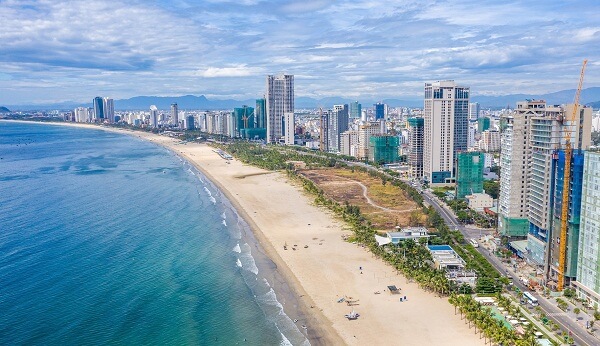
Da Nang is located in the middle of Vietnam, on the arterial North-South traffic axis in terms of road, rail, sea, and air, is an important traffic gateway to both the Central and Central Highlands. This place is the point at the end of the East-West economic corridor passing through Myanmar, Laos, Thailand, and Vietnam.
Da Nang City borders Thua Thien Hue Province to the North, the West and South to Quang Nam Province, and the East Sea to the East. The City Center is 764 km north of Hanoi Capital, 964km south of Ho Chi Minh city, and 108km northwest of Hue city. This is a city with high mountains, deep rivers, steep hills, and midlands interspersed with narrow coastal plains.
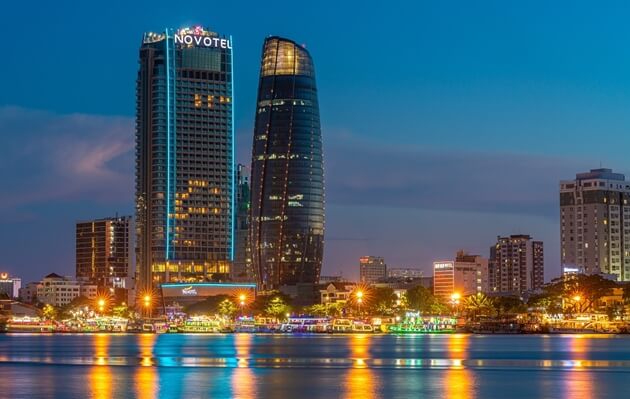
According to the Cham language, the place name “Da Nang” can be explained as “big river”, “great estuary”. This place has been noted on maps drawn from the sixteenth century onwards. That means, very early on in the form of the name, the nature of the large estuary, the quality of the town port was noted as an important point of the city.
As one of the great estuaries of the South of Quang Nam (extending to the South), many centuries ago, even when Hoi An was still in a period of brilliant development in the 17th century, Da Nang estuary was greatly appreciated. In 1835, when Emperor Minh Mang said: “Western ships can only be parked at Cua Han, and other seas are not allowed to trade”, Da Nang became one of the largest commercial ports in the Central region.
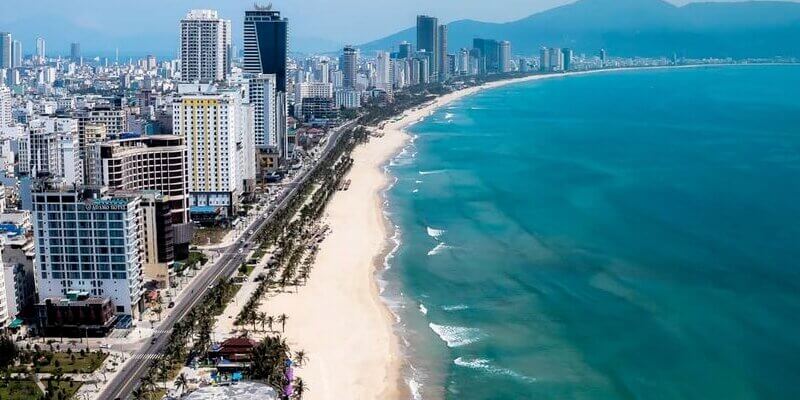
From this point on, instead of Dai Chiem gate as before, the relationship on trade and diplomacy gradually focused on a main focal point of the Central region, the estuary of Da Nang. Thanks to its increasingly important position and role in the Central region, Da Nang began to develop local handicraft industries such as ship repair, preliminary processing of agricultural and forestry products, and related commercial services.
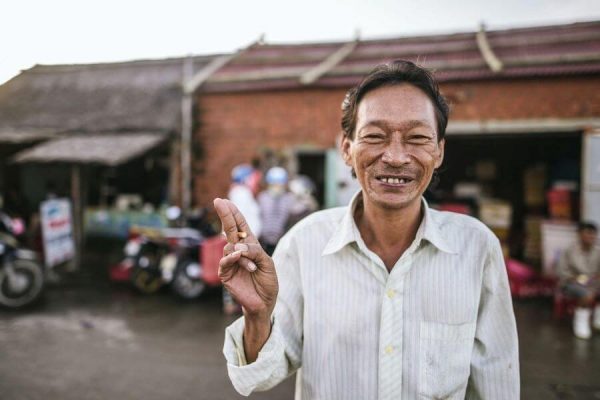
In addition to the natural preference for Da Nang, the city is also surrounded by three World Cultural Heritages: Hue, Hoi An, My Son. A little further afield is the world’s natural heritage Phong Nha – Ke Bang National Park. Therefore, Danang is considered an important transit point on Central Heritage Road. As a result, Danang is considered a city of tourism, a city of monuments and scenic spots.
With each different period, Da Nang will have its beauty that attracts visitors (depending on the individual preferences of each person). But to ensure the best experience you can refer to a few information is as follows
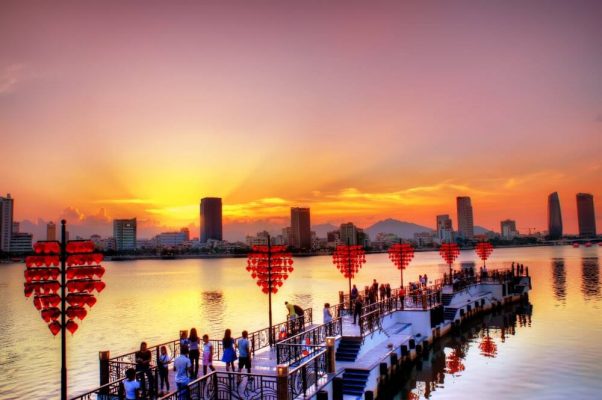
If you have time and want to experience the feeling of long-distance driving (with both motorbikes and cars) you can go from Hanoi / Saigon to Da Nang by yourself. From Hanoi, you can stop at Quang Binh to visit Phong Nha Ke Bang relic, Quang Tri ancient citadel, Truong Son Martyrs Cemetery, Hue ancient capital, and cross Hai Van pass to Da Nang. From Saigon to Da Nang, you can explore a beautiful coastal road on friends jungle/families the South Central Coast running from Binh Thuan to Da Nang.
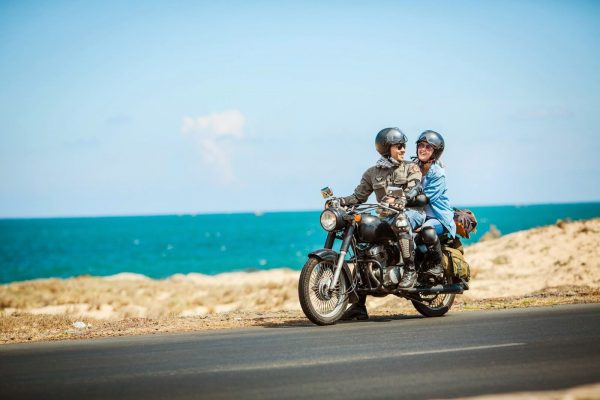
Located on the arterial roads of the country, North-South trips will pass through Da Nang every day. So the number of cars is very large, not to mention dozens of routes that run directly to Da Nang from Ha Noi and Saigon. If departing from Hanoi, it will take about 16 hours and 25 hours if departing from Saigon for a journey to Da Nang. If you like traveling by bus, you should choose the Open Bus routes because these Buses often stop to drop off and pick up passengers at famous tourist destinations.
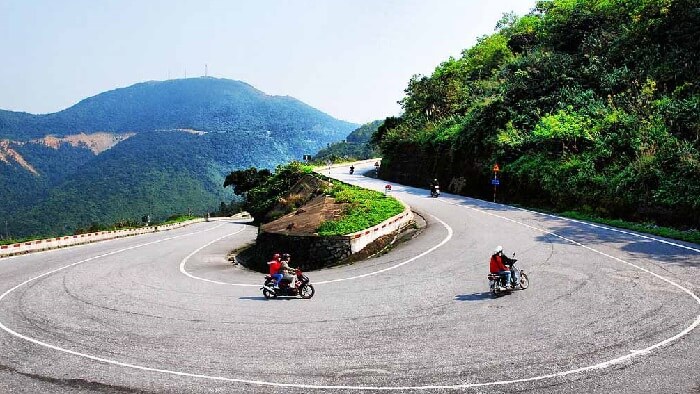
There is very interesting information that only those who often take the North-South train will know, that is, with each train running through Da Nang station. Then it will always change the opposite direction of the train. If you are sitting down from Hanoi to Da Nang, after leaving Da Nang station you will sit upside down.
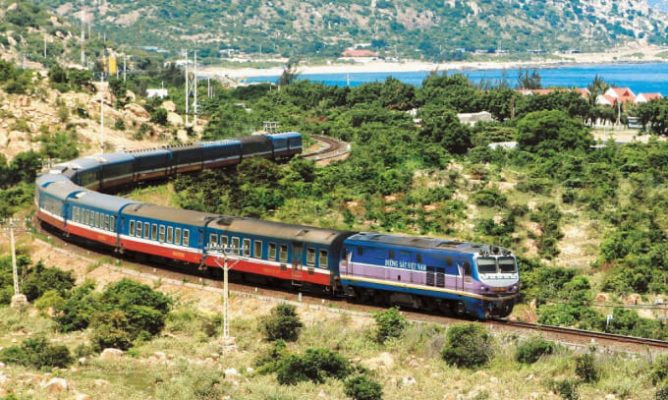
From Hanoi, there are 6 daily trains to Da Nang, namely SE1, SE3, SE5, SE7, SE9, SE19. In terms of the reasonable travel time, you may be interested in the train SE1 (from Hanoi 22:20 to Da Nang 13:25) SE3 (from Hanoi 19:30 to Da Nang 11:05), or SE19 (go from Hanoi 20:10 to Danang 12:20).
You can find ways to get Da Nang here!
From Saigon, there are 6 daily trains to Da Nang, namely SE2, SE4, SE6, SE8, SE10, and SE22. Similarly, the trains to Da Nang during the day are SE2 (going from Saigon 9:55 to Da Nang 13:37) SE4 (going from Saigon 19:25 and arriving Da Nang at 12:16), and SE22 (going from Saigon 11:40 am and going to Tam Ky at 6:28)
Currently, all airlines have direct flights to Da Nang with the cheapest fares that can be booked during the peak season from VND 1 million to 3 million for a round-trip flight from Hanoi or Saigon. If you book tickets during the off-peak times (around the end of the year) or fly during the not-so-beautiful hours, you have the opportunity to book cheaper tickets.
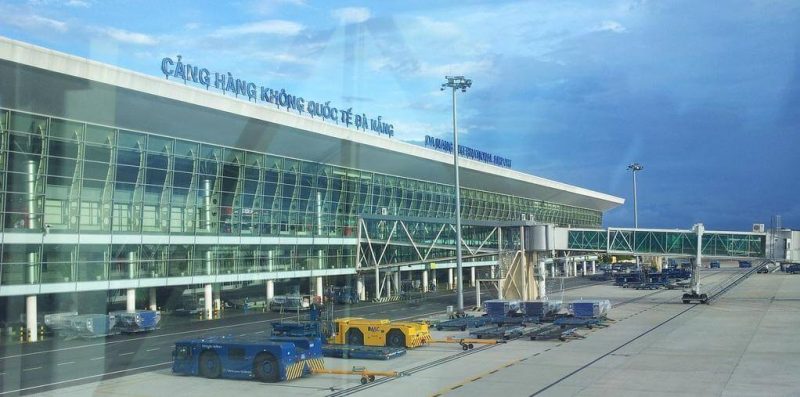
A big advantage of Da Nang airport is that it is located right in the city, so the cost of traveling by taxi from the airport to the hotel or even straight to Hoi An ancient town is relatively comfortable.
The fresh climate and convenient transportation are advantages for you to use a motorbike to travel during your days in Da Nang. There is almost no traffic jam, the road is relatively clear and easy to go, so even those who are not good at driving will be able to go.
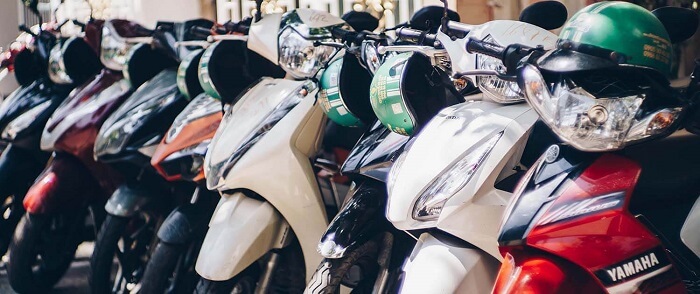
Renting a motorbike is very easy, the cost is also reasonable, almost anywhere in the city you can find car rental places, even car rental services also deliver the hotel. However, riding a motorbike is only suitable for groups of young friends/families who like to roam and explore the nooks and crannies. If you go to a family with children or the elderly, please refer to other travel options.
In some popular tourist attractions or hotels, several cycloids are often available to cater to those who prefer to see the city slowly. On the street cycle, visitors have the opportunity to pass by famous destinations of the city such as Danang Cathedral, Museum of Cham Sculpture, Bach Dang Street, Han Market, Tran Phu Street, River Bridge Han, Nguyen Tat Thanh Street, Hoang Sa Street,… The right time to walk around is morning and evening has become cooler.
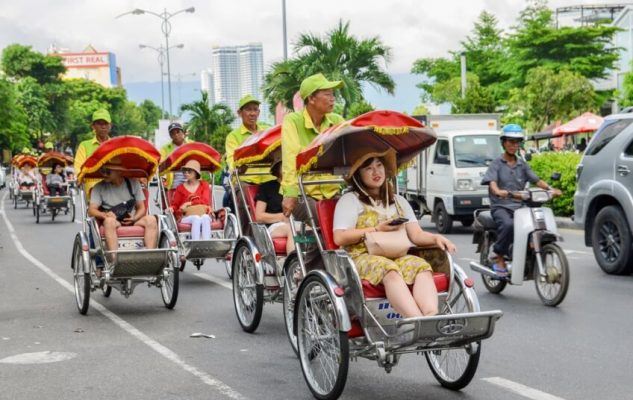
Not many cars like the bus network of Hanoi or the Saigon bus network, but the bus routes in Da Nang are quite enough to travel to some famous places. Da Nang city also operates two bus routes for tourism departing from the airport and going to some famous places in the city. So, if you go alone, want to save money, and do not want to drive by yourself, then the bus option is quite suitable for you.
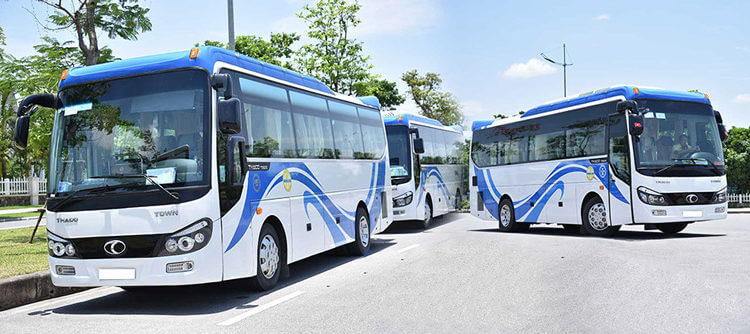
Along with Hanoi and Saigon, Da Nang is a city where the Grab Car app is allowed to operate, the number of cars is not as much as the other two big cities. The price of Grab is not necessarily cheaper than a taxi, but by calling a car with the application, it will be more convenient to track the vehicle as well as use other forms of payment without cash.
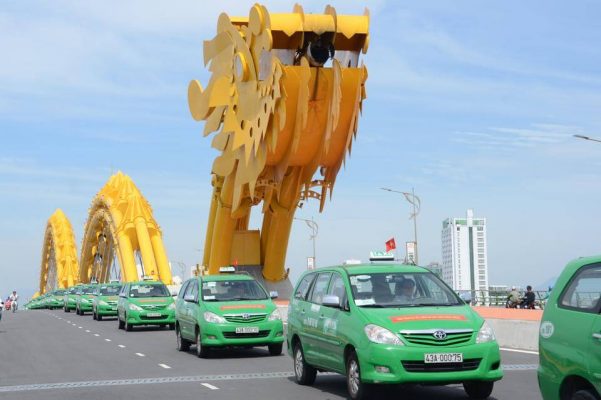
As a tourist city, taxis can be found everywhere, this is a popular and convenient means of transportation for most tourists due to its easy calling. While traveling, if you find it suitable for a particular driver, you can get information to call directly for future trips.
Several taxi companies are operating in Da Nang
As a tourist city, Da Nang is invested a lot in the transport system, infrastructure as well as the hotel restaurant sector. Currently, the city has nearly 500 hotels and motels with more than 15000 rooms (of which 20% are rated 3 stars or more). With the development and increase of many prestigious brands for travel and accommodation establishments, Da Nang can completely meet the increasing demand for tourists to travel to the locality.
With a long coastline, Da Nang has relatively many high-end resorts located right next to the sea. However, in Da Nang, these resorts are planned further away than the central beach area, do not take up the public space of visitors but still ensure private space for customers staying here.
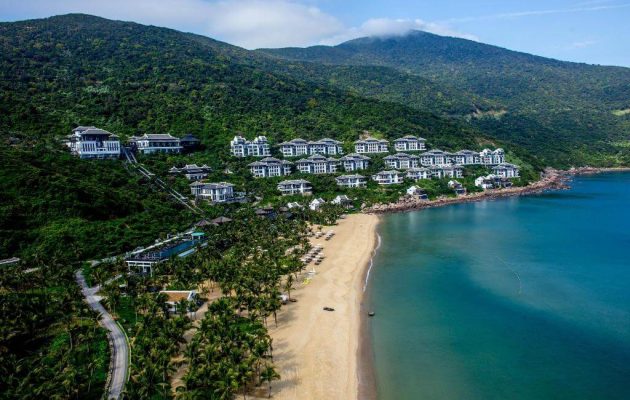
Tourists to Da Nang often have 2 options for hotel locations, in areas near the sea or inside the center. Being close to the sea will be convenient for you to go to the beach, or near the center will be convenient to eat and drink. Depending on your preferences, you can choose accordingly.
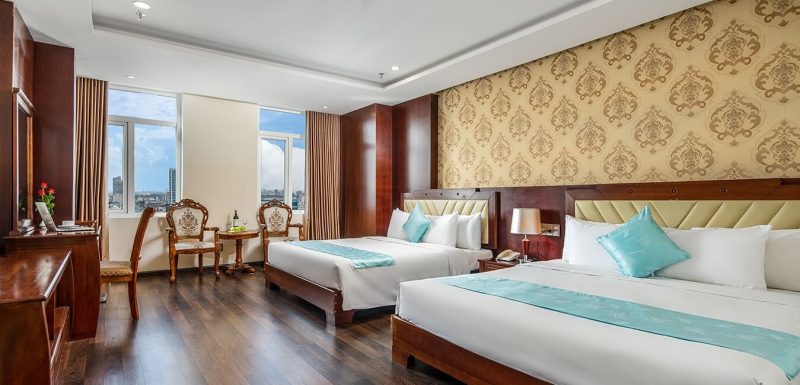
Like many other tourist destinations, homestays in Da Nang are often small hotels/motels with small room sizes, beautifully designed, and affordable to attract tourists who are groups of young people. Staying at these homestays, in addition to saving money, you can also interact with many groups of friends with similar interests, and receive support from the host (usually young local people) in the exploration of the fun and dining corners of this city.
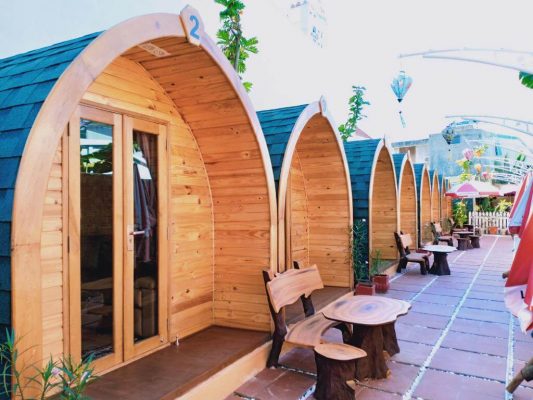
Top 10 cheap and beautiful homestays in Da Nang for your trip
Currently, in a few big cities, (including Da Nang) where there are many condominiums built, there are forms of renting apartments with full facilities and amenities like at home. These apartments are very suitable for families or close friends because you will have a comfortable living space, can cook by yourself, do laundry, generally relatively similar to at home. The drawback is that these apartments are often located deep in the city.
Forbes magazine has voted My Khe as one of the 6 most attractive beaches on the planet. Seen from above, My Khe beach attracts tourists by a blue color that stretches to the horizon. Especially, when sunset falls, this place wears a new shirt with a quiet color and creating a beautiful scene.
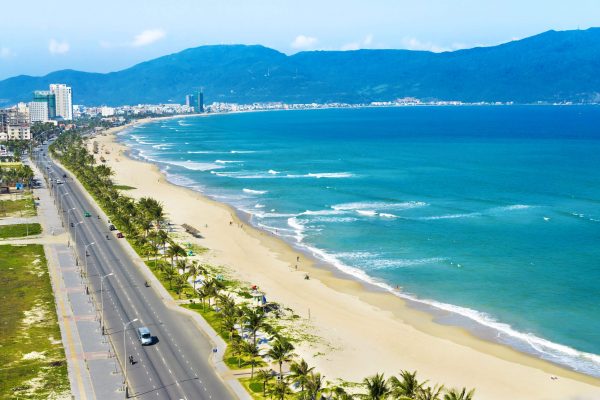
My Khe includes 3 main beaches:
At the intersection of Pham Van Dong Street, cutting the coastal road is Pham Van Dong central park beach. It also serves the needs of tourists and local people to swim at night. Da Nang Night Beach is one of the first-night beaches in Vietnam, well managed and safe, with a regular rescue team on duty and modern lighting.
Turn right about 500m is the T20-T18 Beach, associated with the history of the military convalescence of T20-T18 and closer to the Non-Nuoc area. This beach has a short sandy beach, deep-sea, and usually has larger waves, is very suitable for thrilling sea sports, and has hosted an international kite surfing tournament. This area is also quite bustling with a lot of restaurants.
Turn left about 300m to beach number 1-2-3. This beach is connected to Pham Van Dong Beach Park and is the main beach of My Khe beach. Beach number 1-2-3, has a long and wide sandy beach, gentle sea, and few waves, very suitable for families, children, and the elderly. There is also a reason to choose the main beach of the city with a full range of swimming facilities.
My Khe Beach is attractive with fine white sand, clear blue sea water, poetic coconut trees and is an indispensable destination for tourists when traveling to Da Nang.
Son Tra is the name of a peninsula and a mountain in Son Tra District (named after the peninsula), located about 10 km from the city center. Son Tra Peninsula along with Hai Van pass surrounds Da Nang City and Danang Bay. Because of its location, Son Tra is like a stele to shield Da Nang from natural disasters coming from the sea.
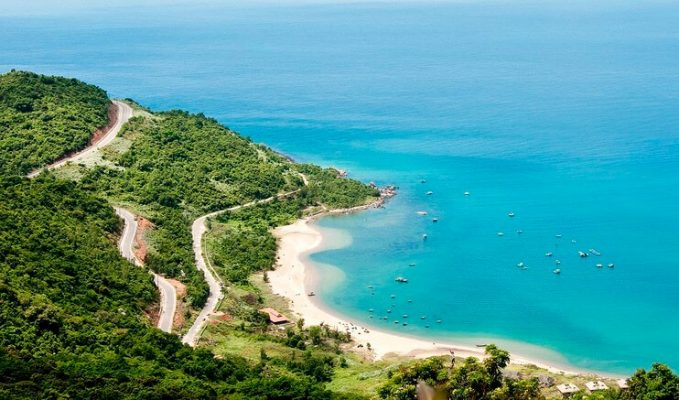
In ancient times, Son Tra was an island consisting of 3 high mountains. The southeastern peak looks like a goat leaning into the sea, so it is called Nghe island. The western tip is shaped like a hawk’s beak, so it is called Mo Dieu Peak. And the northern one reaching Ngu Hai Mountain beyond the seaport is as long as a horse’s neck, so it is called Co Ngua Mountain. Over a long period of time, the seawater flowing along the coast has loaded alluvium to gradually accretion, forming a promontory running from the mainland to the island, Son Tra Peninsula is formed from there. Nowadays, at these tops, famous tourist areas such as Bai Rang, Bai Da, Bai But, or Indochina rest areas are formed. In Particular, there is a sacred and mysterious Linh Ung Pagoda, which is an ideal destination for tourists to Da Nang.
Linh Ung Pagoda, Son Tra is one of three pagodas with the same name Linh Ung in Da Nang. It is not clear whether by accident or by predestined word that all three temples are located in prime locations of Da Nang city, forming a sacred triangle in the city. It is Linh Ung Non-Nuoc pagoda, located on Thuy Son Island of Ngu Hanh Son Mountain. Linh Ung Ba Na Pagoda, located on the towering high mountains of the resort site “Da Lat of the Central” and Linh Ung Bai But, Son Tra, halfway up the mountain – Son Tra Peninsula. Linh Ung Bai But Pagoda is the largest, newest, and most beautiful temple of these 3 temples.
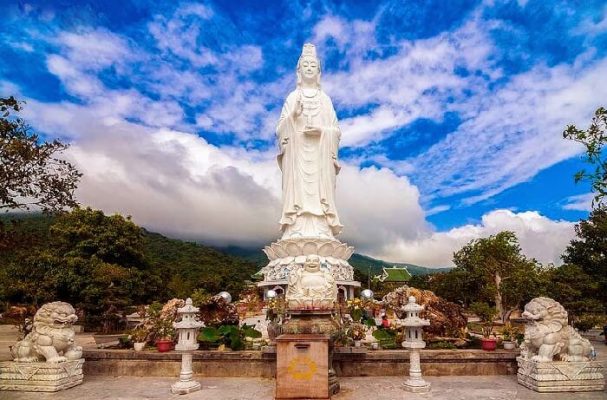
Linh Ung Pagoda – Bai But stands on a 20-hectare land area of Son Tra Mountain with main items of the main hall, ancestral house, lecture hall, road halls, library, cafeteria, toilets, statues of the arhat and construction is now still unfinished. The temple has a modern style combined with the inherent traditional Vietnamese Pagoda.
An important highlight of Linh Ung Bai But Pagoda is the statue of Quan The Am Buddha, which is considered the tallest in Vietnam (67m). The statue stands with its back on the mountain facing the sea, one hand catches the seal, the other holds a pot of nectar-like a sprinkling of peace for fishermen who are reaching out, carrying many prayers for a peaceful crop, calm sea, and national peace.
Bai But is located in the south of the Son Tra Peninsula with relatively unspoiled beaches. Below are large coral reefs and habitats for preserved turtles (family of turtles). On the shore is the primeval forest, still exists the red-faced gibbon listed in the red book.
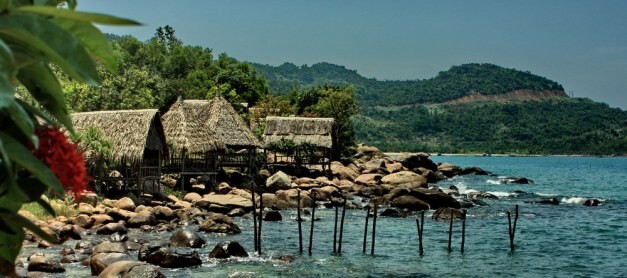
Bai Rang
Passing Linh Ung Pagoda, you will see a sign to the beach, below there are many food services, resting, and renting things to swim in.
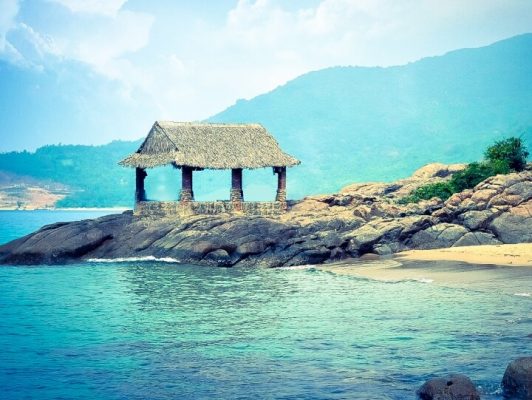
To reach the top of Ban Co, you have to climb a rather steep staircase. According to legend, two elves sat playing chess on the top of Son Tra Mountain, but for many days he was still indomitable. Then one day, the fairies flew down to the beach to bathe, while ignoring the playful fairy goddess, a fairy was defeated by the opponent. Frustrated, the fairy stomped his feet on the rock, kicked the chessboard into the sea, and flew back to the sky. According to that legend, people placed a statue of De Thich sitting alone next to a rock with the shape of a chessboard and the top of the Chess Board named from there.
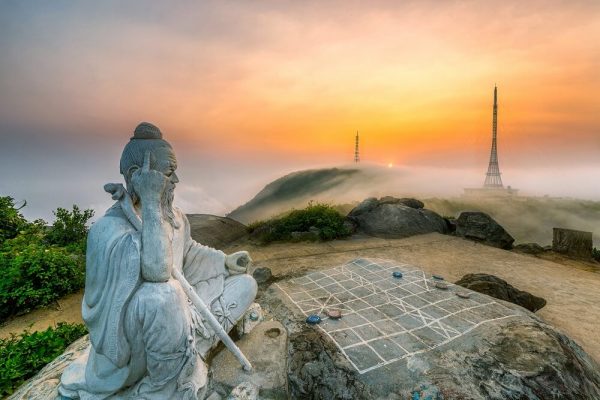
Son Tra lighthouse, also known as Tien Sa lighthouse, is located at the top of Hon Son Tra with an altitude of about 223m above sea level. It is one of the most beautiful lighthouses in Vietnam, built in the 1950s by France. The lighthouse has independent lights, helping boats operating in the waters of Thua Thien Hue – Da Nang can orient and position themselves. The lighthouse is 15.6m high, 2.7m wide on average, with a geographic view of 14 knots and a bright center height of 238.4m.
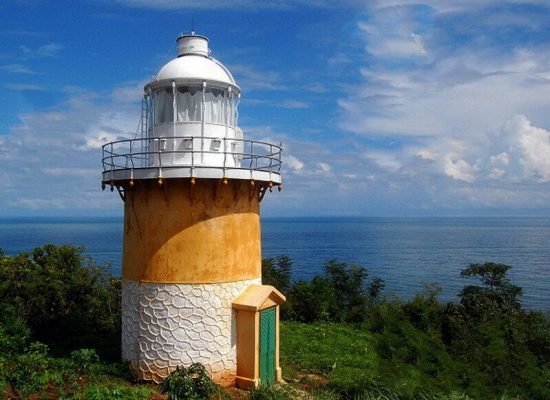
The radar station on the Son Tra Peninsula (radar station 29 – Radar Regiment 290 – Air Force Division 375) is located at an altitude of 621m above sea level, on the top of Son Tra mountain, dubbed the “Dong Duog Eye” with an observation radius of the system up to 300km. The sweep range can control both Indochina to Hong Kong and Hainan Island. This radar station was built by the US in the 1960s. By 1990, the Civil Aviation Administration of Vietnam invested in building a new air traffic control radar station for civil aircraft (new sphere – 3rd ball). Currently, 2 radars are under the management of the Air Force and 1 radar under the civil aviation industry of Vietnam.
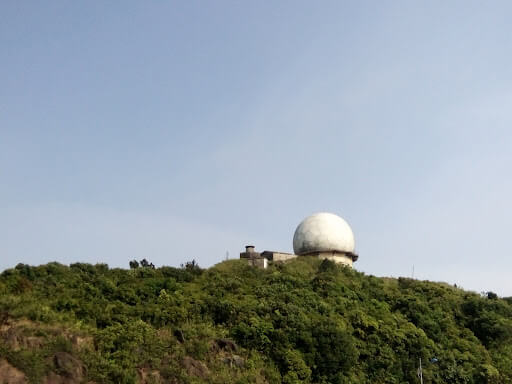
Bai Bac, the beach facing the northeast, the local people often call the North Beach, this beach has two East and West trenches. Dark green on rocks along two rapids. The locals call it “jam”, a pretty delicious specialty that can be eaten raw, cooked with anchovies or fish, which is also quite interesting.
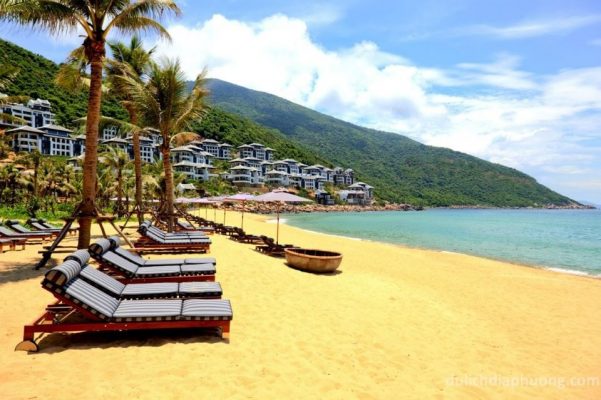
Currently, this area is completely located in the resort of Intercontinental hotel, it is almost impossible for outsiders who are not guests in the resort to enter.
Son Tra Bang rapids is a tourist destination that is little known to people, but it is a tourist destination that is enjoyed by backpackers. Few people know that the water surface of the pristine Ghenh Bang beach contains many colorful corals and fish. On the large rocky beach, there are only a few small restaurants serving picnic groups with relatively soft prices. Here, there can be typical delicacies such as jellyfish salad, steamed squid, fresh steamed fish,… brought up from the boats of the fishing village on Rang rapids as gifts to the sea at the foot of Son Tra waves.
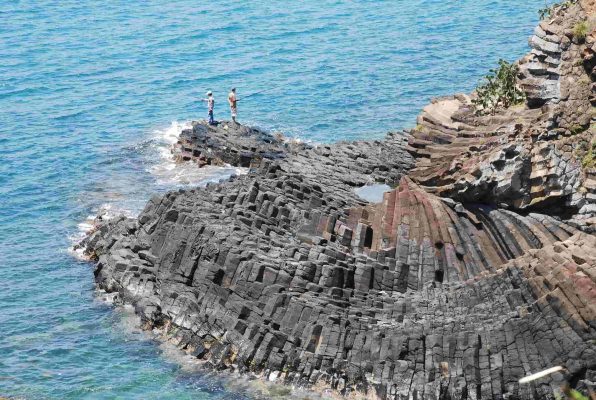
Bai Cat Vang tourist area has an area of nearly 10,000 m2, is favored by nature for long sand that curves by the clear and cool seawater, surrounded by a majestic, green mountain landscape. In addition to familiar activities such as swimming, visitors are also fully equipped with diving goggles, snorkel, life jackets to dive and see the magical coral reefs, or are provided with fishing rods for fishing, catching sea snails, abalone,… This place also provides services such as kayaking, basket boat, or canoe rental for tourists to freely explore at sea. Attractive marine sports activities such as pulling banana boats, swinging on a rope or going to throw nets, catching ducks with local fishermen will be the left impression of visitors when coming here.
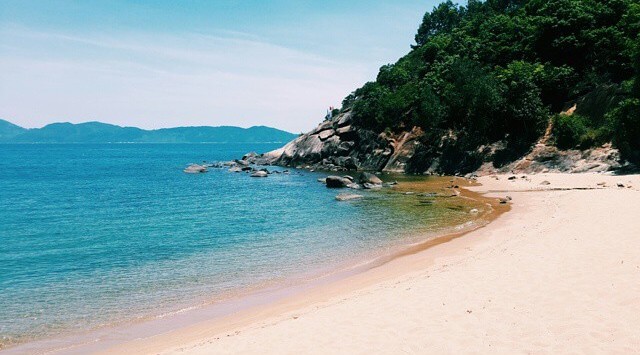
Han River Bridge was opened on September 2, 1998, inaugurated on March 29, 2000. This is the first rotating bridge designed and constructed by Vietnamese engineers and workers and is the sole rotating bridge in Vietnam. The bridge is 487.7 meters long, 12.9 meters wide, includes 11 spans, 33 meters each, reinforced concrete structure and 02 cable-stayed spans with a total length of 122.7 meters, structure main bridge girders and towers are made of steel, the deck is made of reinforced concrete.
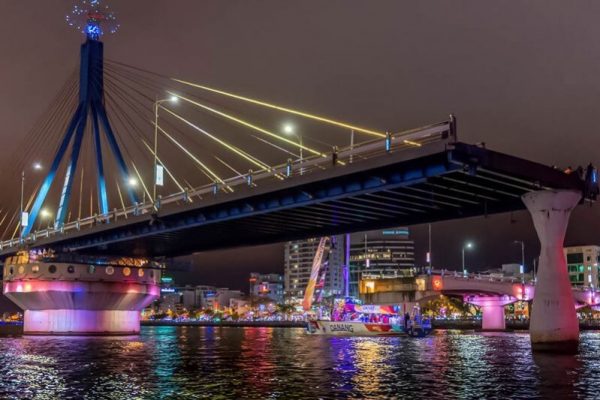
Every day, around 1:00 am, the middle part of the bridge rotates 90 degrees around the axis and lies along the flow of the Han River to pave the way for large ships to pass. Around 4:00 the bridge will return to its original state
Dragon Bridge is the 7th bridge and the newest bridge over the Han River. Because the bridge looks like a dragon, it is called Dragon Bridge about 666m long and 37.5m wide with 6 lanes running. It was officially opened to traffic on March 29, 2013. The bridge is designed and built in the shape of a dragon capable of spewing fire and spraying water like real. According to the design, the dragon on the bridge can spray fire for two minutes and the next 3 minutes to spray water, making the bridge an impressive, unique, and attractive highlight in Da Nang City. Currently, fire and water spraying time starts at 21:00 every Saturday, Sunday, and major holidays.
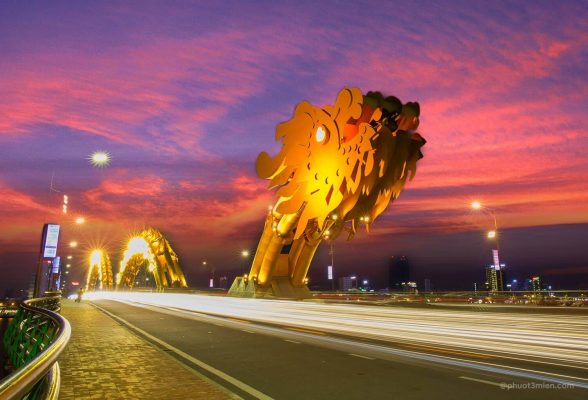
Tran Thi Ly Bridge was a railway bridge, in the French colonial period called De Lattre de Tassigny, then renamed Trinh Minh The Bridge, located about 20m upstream from Nguyen Van Troi Bridge. After 1975, the bridge was named Tran Thi Ly Bridge and was upgraded to a road bridge, together with Nguyen Van Troi Bridge, serving as a trade, connecting the two banks of the Han River.
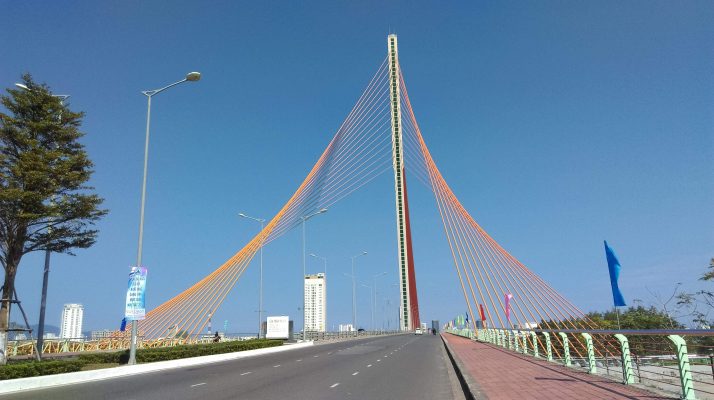
Tran Thi Ly Bridge is uniquely designed with the shaping and positioning of the main tower, 145 meters high, inclined 12 degrees to the West including 3 flat wires. In which, the Eastern wire plane is anchored from the pivot body to the middle girder, the western wire plane is arranged twisted, and split into two branches forming a wind-stretch sail facing the East Sea.
Thuan Phuoc Bridge is a suspension bridge spanning two banks of the Han River flowing into Da Nang Bay, connecting Nguyen Tat Thanh Street with Man Quang Bridge, between Hai Chau and Son Tra Districts. Seen from all angles, Thuan Phuoc Bridge has a modern, splendid and charming look. The bridge is located in a special location, where the Han River flows into the sea at the mouth of Da Nang Bay, connecting two coastal roads Nguyen Tat Thanh and Hoang Sa – Truong Sa, forming a system of uninterrupted coastal traffic from Hai Van tunnel to Son Tra peninsula, crossing Man Quang bridge and connecting with Son Tra – Hoi An tourist route. Since then, a complete transport – tourism system has been completed, opening up the possibility of exploiting tourism potential not only in Da Nang but also for neighboring localities such as Hoi An and Thua Thien – Hue.
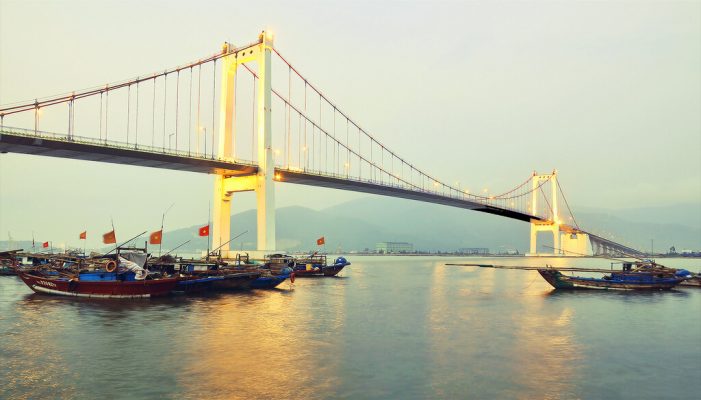
The Sun Wheel located in the Asian theme park is becoming a destination attracting Da Nang people and tourists alike. The rotation is 15 minutes long and includes 64 cabins (6 people) that can accommodate up to 384 guests. From this rotation, visitors can take in the sight of Da Nang sparkling at night or magical under the sunset. With a height of 115m, visitors can fully enjoy the panoramic view of Da Nang with the view from above.
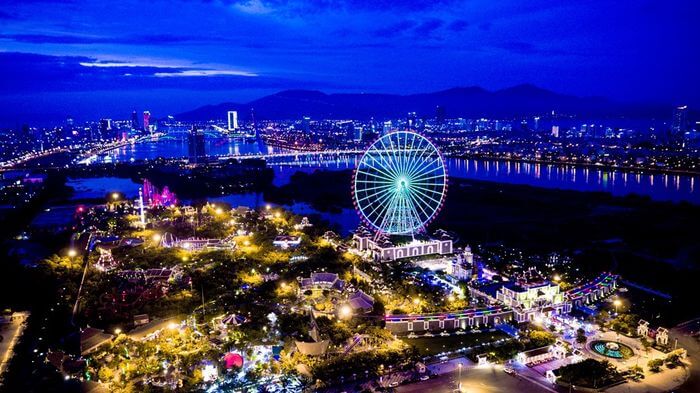
Ngu Hanh Son or Non-Nuoc Mountain is the common name of a scenic spot consisting of 6 limestone mountains rising on a coastal sandy beach, including Kim Son, Moc Son, Thuy Son, Hoa Son, and Tho Son. This place is located about 8 km southeast of Da Nang city center, right on the route Da Nang – Hoi An.
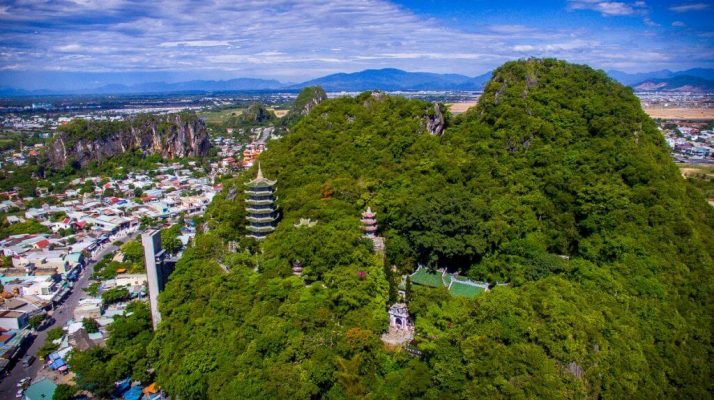
Ba Na Mountain is located in an area of Truong Son mountain range located in Hoa Ninh commune, Hoa Vang district, 25km from Da Nang. After 2000, Ba Na was awakened and re-positioned as a tourist town and quickly returned to the position of one of the most famous tourist resorts of Da Nang city.

Located on Ba Na Tourist Area, Golden Bridge was inaugurated in 2018, the road connecting Marseille cable car station to Thien Thai Garden and Le Jardin d’Amour flower garden. In the middle of the bridge, there are two large hands carved from stone, this is the impressive highlight that makes the bridge famous around the world.
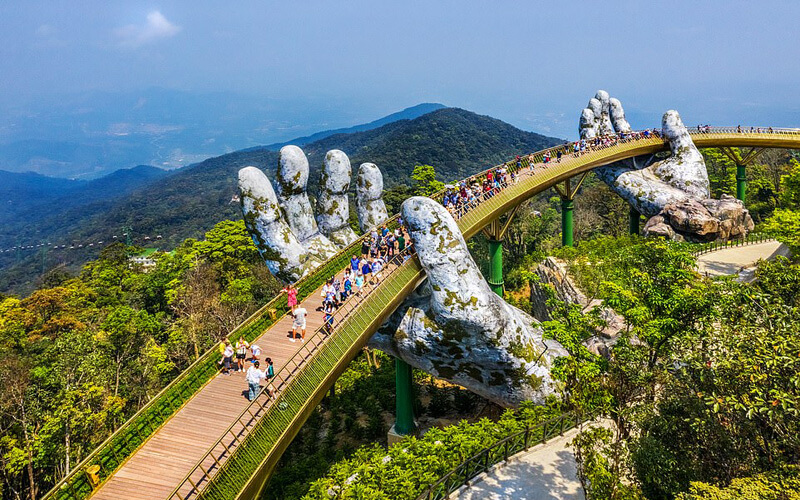
The 9 gardens at Le Jardin D’Amour are 9 interesting stories set in 9 different unique architectural styles, creating a poetic atmosphere and full of fragrance.
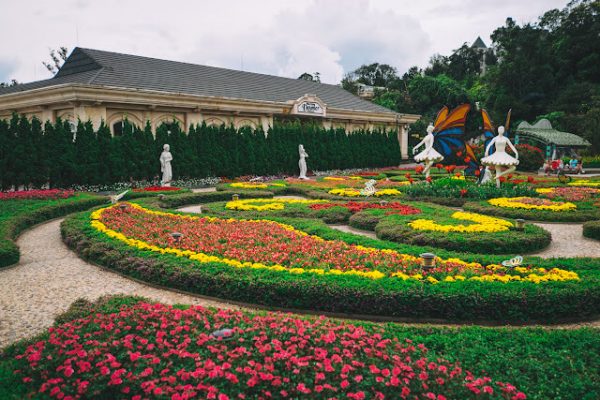
Located at an altitude of over 1,400 meters, Linh Ung Pagoda was inaugurated on March 5, 2004. The architecture of the Tam pagoda is similar to that of the Tam Thai Pagoda, the whole yard is paved with stone. In front of the pagoda is a rare three-leaf pine tree listed in the Red Book of Vietnam.
The pagoda has a majestic, 27m-high white statue of Sakyamuni Buddha; this white statue can be seen from sunny days. The pagoda belongs to the Bac Tong sect. In terms of architecture and worship, Linh Ung Ba Na Pagoda resembles Linh Ung Ngu Hanh Son Pagoda and is abided by the same monk.
French Village recreates a classic and romantic France with a combination of unique architectural works: squares, churches, towns, villages, hotels,… Coming to the French Village, tourists are like going back in time to experience the delicate and poetic living space of one of the world’s oldest countries.
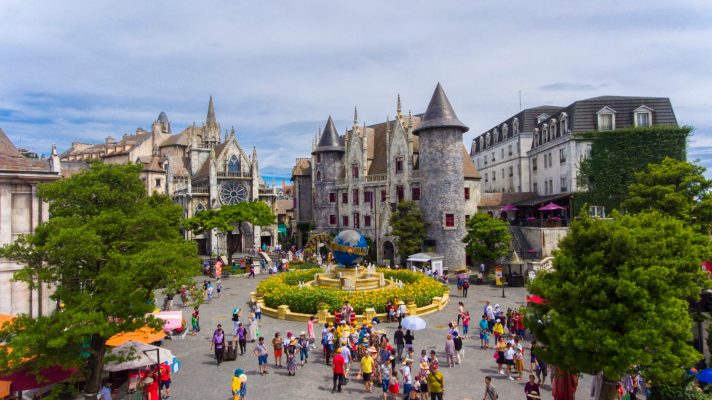
Inspired by two novels “Journey to the Center of the Earth” and “Twenty Thousand Leagues Under the Sea” by French writer Jules Verne, Fantasy Park is an indoor entertainment area of 21,000 square meters with a design 3 floors include more than 100 games:
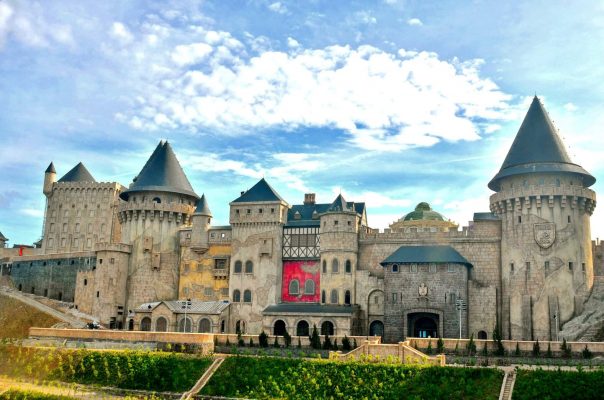
When taking the Ba Na Cable Car to go to the top of Vong Nguyet, many visitors can look down and see the Mo Stream flowing below. In the summer, Mo stream becomes very touristy because there is a 9-story Toc Tien waterfall that looks like a fairy’s hair.
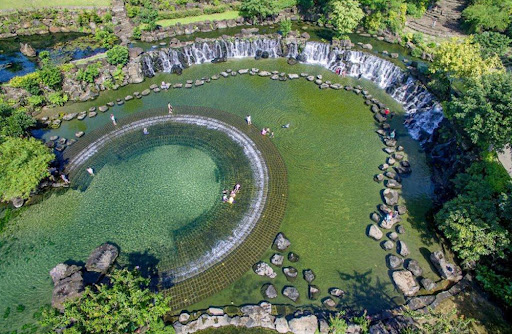
Ba Don Phot is the name that was born with Ba Na by the French when he surveyed the mountain cluster here as a resort. Ba Don Phot Peak is located on the Chua mountain range, with an altitude of 1,000m above sea level. It is cool all year round with rich flora and fauna.
God Well is located deep in the mountain in Hoa Ninh commune, Hoa Vang district. Perhaps due to the difficult terrain, this landscape is little known. About 10 years ago, this place was discovered by the jungle and then a few groups of young people came to conquer and explore. Thanks to the natural beauty of the mountains and forests, Gieng Troi was shared by groups on social networks and spread to more people. From Ba Na cable car ticket office, you need to go about 10km more to reach this location.
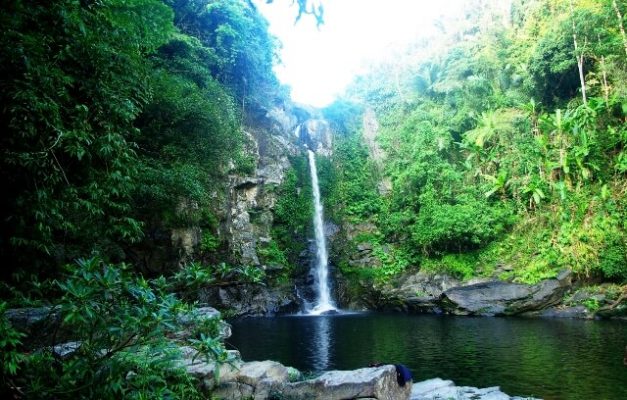
Hai Van Pass is also known as Ai Van Pass (because there is a gate on the top of the old pass) or May Pass (because the top of the pass is often covered with clouds), 500 m high (compared to sea level), 20 km long across the Bach Ma mountain range (a part of the Truong Son range that runs close to the sea) in the middle of the border between Thua Thien Hue and Da Nang.
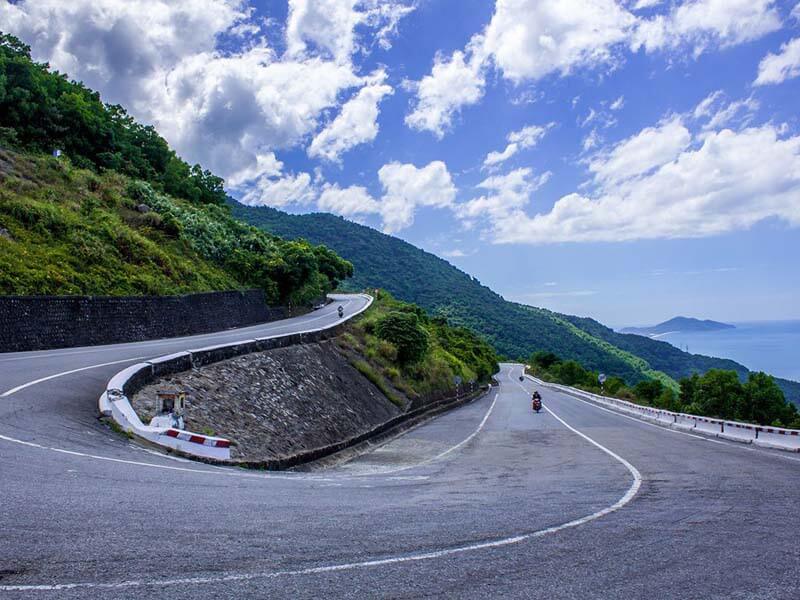
Today, on the top of Hai Van pass, there is still a trace of a gate. This gate is called Hai Van Quan (海雲 關), built in the Tran dynasty, and was restored in the Nguyen dynasty (7th Minh Mang, 1826). The door looking to Thua Thien has three words “Hai Van Quan”, the door looking down to Quang Nam is titled “The first majestic Thien Lower”. On one side of the table, there is an additional record of “Minh Mien, lost the year of the sand,” that is, and did it on the good day of the 7th year of Minh Mien (1826). This title is said to have been conferred by King Le Thanh Tong when the king stopped his army here in the year of Canh Thin, 1470).
Da Nang Museum is currently located on the campus of a special national historic site of Dien Hai, started construction in 2005 and was put into operation to welcome visitors in 2011. The museum is a place to display and introduce the history of formation, national culture as well as evidence of this land through many different periods.
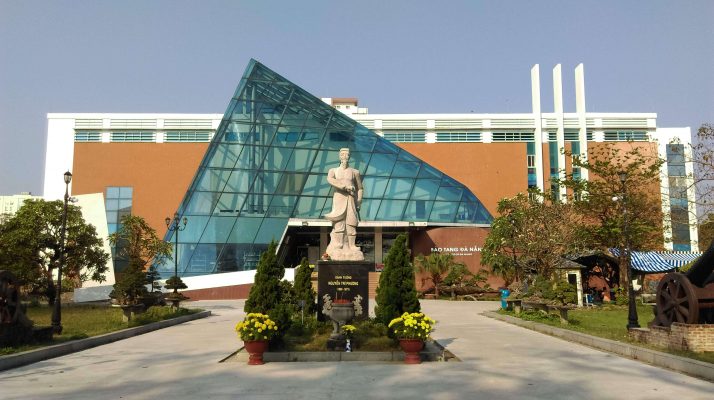
Da Nang Museum of Cham Sculpture is the largest museum displaying Cham artifacts in Vietnam. This is a museum built by the French, specializing in the collection, storage, and display of the relics of the kingdom of Champa found in Cham towers and citadels in the southern central coastal provinces and Highlands.
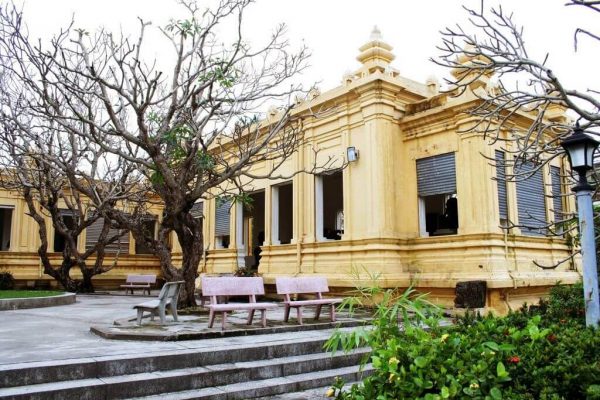
Da Nang Museum of Cham Sculpture has a total area of 6,673 m², of which the exhibition area is 2,000 m². The frontage of the museum house is modeled after Gothique architecture, in harmony with the surrounding space, is a tourist attraction when visiting Da Nang. The museum is open to visitors seven days a week. The total number of art objects on display at the museum is up to about 500 items and are divided according to the rooms corresponding to the geographical areas where they were discovered including the My Son, Tra Kieu, Dong Duong, and Thap Me rooms. and corridors of Quang Tri, Quang Nam, Quang Ngai, Kon Tum, Quang Binh and Binh Dinh.
The museum is located on the grounds of Quan The Am Pagoda, Ngu Hanh Son, where hundreds of ancient Buddhist artifacts are currently kept. Currently, the museum displays more than 200 artifacts crystallizing unique cultural values, including Bodhisattva statue of Guan Yin ejection, Bodhisattva riding dragon fish, many sets of ancient statues such as Thich Ca, Duoc Su, Maitreya, Tantric Bodhisattva Buddha, Quan Yin, Champa, Amitabha, bronze bells, eight-world staff,… Besides, the pagoda currently holds many artifacts such as Buddha statues, woodblocks of Buddhist scriptures, Simultaneous antiquity, worship items,… dating from the 7th century to the end of the 19th and 20th centuries ”.
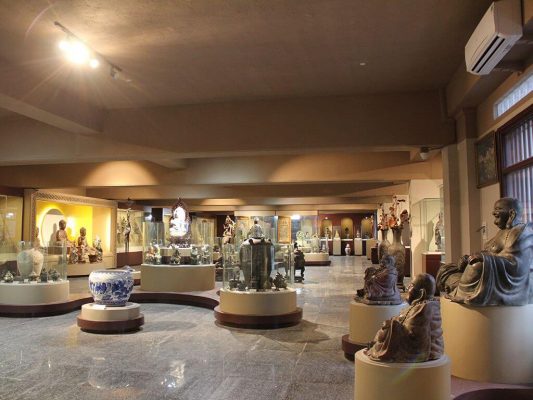
The reverse house model is found in many places, including Da Nang. Here you will have interesting pictures, seemingly breaking all the laws of gravity on the earth.
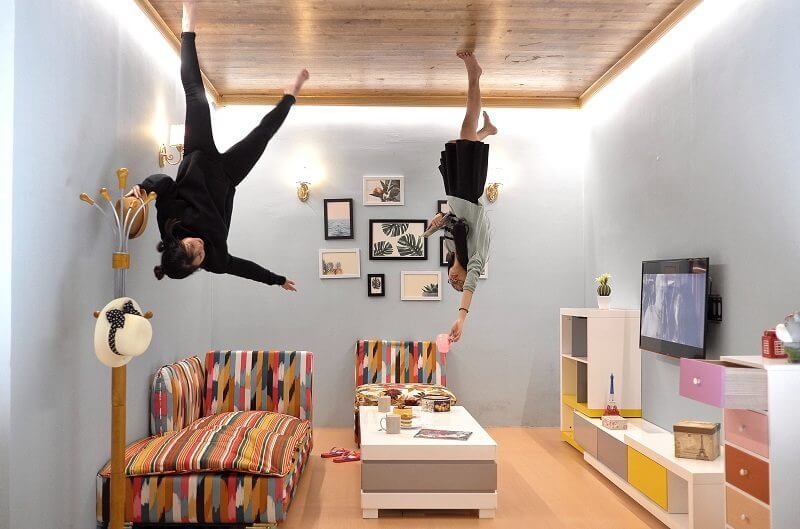
Art in Paradise Danang is a 3D Art painting museum, opening up a world of delusions of thousands of people, challenging all devotees who love to explore, have high imagination, and have a sense of humor. Art in Paradise Danang owns more than 130 unique and creative 3D paintings drawn directly on the museum’s walls and floor with the skillful hands of nearly 20 talented artists from Korea.
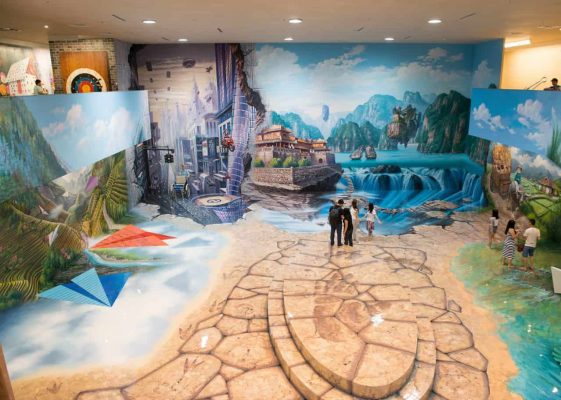
Built in 1940, because it was located on a highland dune in the middle of the city, people here used to call it the name Con Cho. This market is considered one of the oldest and largest markets in Da Nang. If you love exploring delicious snacks at super cheap prices, you should also take the time to visit Con Market.
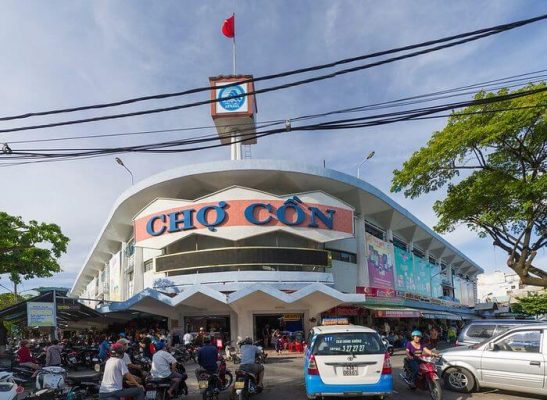
Van village was formerly known as leper village – Phong village. It is a small village located at the foot of Hai Van Pass, the residence of a small subdivision of people living separately from the people of the city since the ‘80s. Later, supported by the state, all People entering the city live in harmony with everyone, so Van Lang still retains many wild and rustic features of a coastal fishing village. Currently, this place has been planned to build a resort project, so in the future, the wild features may be lost, if given the opportunity you can arrange a time to come here once.
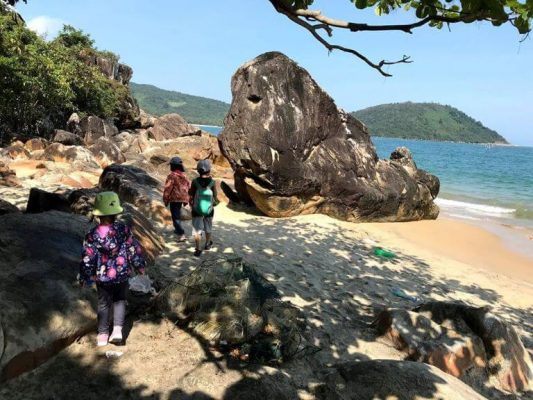
To reach Van Lang you can go by sea (by boat, boat, canoe) or by land. You should go down from the Hai Van pass, though a bit further, but safer than going through the train tunnel. From Da Nang, you follow the direction of Hai Van pass about 2-3km, you will see a house on the right, then park the car and ask for directions to the village. On Google Maps you can see Van Village located by the sea of Nam Chon Bay.
Danang Cathedral (official name: Church of the Sacred Heart of Jesus, also known as Con Ga Church) is the cathedral of the Diocese of Da Nang in central Vietnam. This is the only church built in Da Nang during the French colonial period.
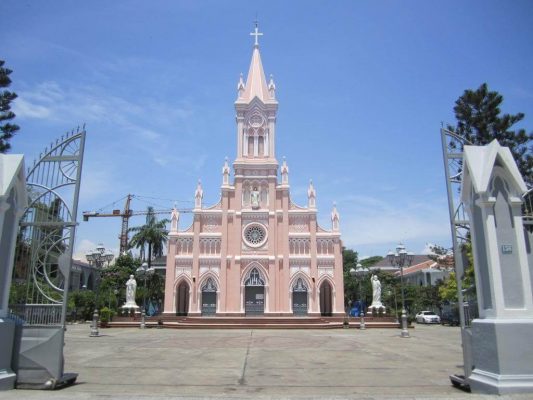
The church has a Gothic architecture style with towering lines, canopy door arches. Inside the church, pictures and statues are illustrating the events in the Bible that follow the motifs of the Western churches. On the top of the church, in the position of the lightning rod, there is a statue of a gray chicken made of alloy used to determine the wind direction. That is why this church is also called Con Ga Church.
Located on the northwest coast of Da Nang Bay, the Nam O area has extremely favorable natural conditions for tourism development; Surrounded by mountains, rivers, seas, green trees, and a cool climate. Being famous for the old fishing village area of the city, there are traditional craft villages with typical fish sauce and rustic dishes (fresh seafood, fish salad, fish vermicelli, seaweed,…) not only attracting tourists. the calendar is also an interesting destination for Danang residents.
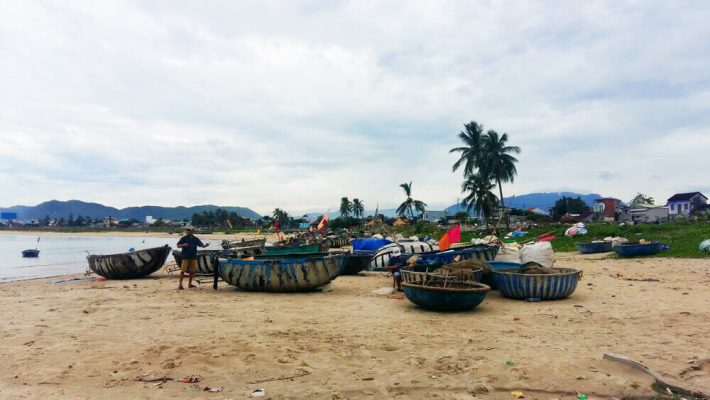
This is a relatively attractive tourist area, in addition to adventure games such as boating, waterfall crossing, visitors coming here will enjoy the specialties and characteristics of Hoa Phu mountains such as rice, grilled chicken. Stream fish, stream snails, or visit the Tong Coi village – a place that simulates the daily life of the Co Tu village.
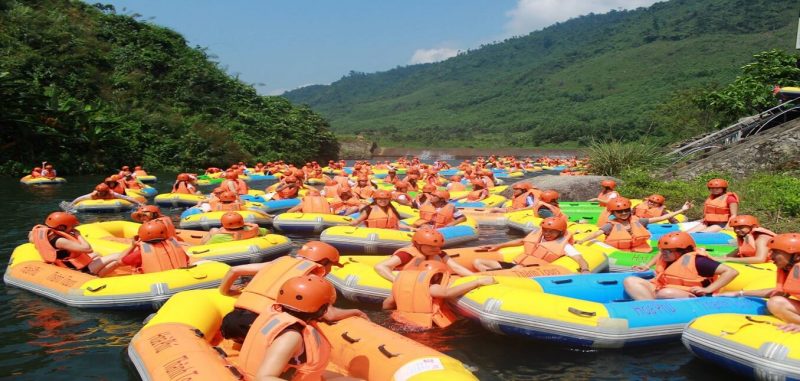
Nui Than Tai Hot Spring Park is designed with materials close to nature. The baths are made entirely of natural stone, cut and formed by the artisans of the Non-Nuoc stone village. For the first time in Vietnam, there are mineral bath products with tea, wine, coffee, milk, mud, and especially hot spring bath according to Japanese culture which is often called ONSEN bath.
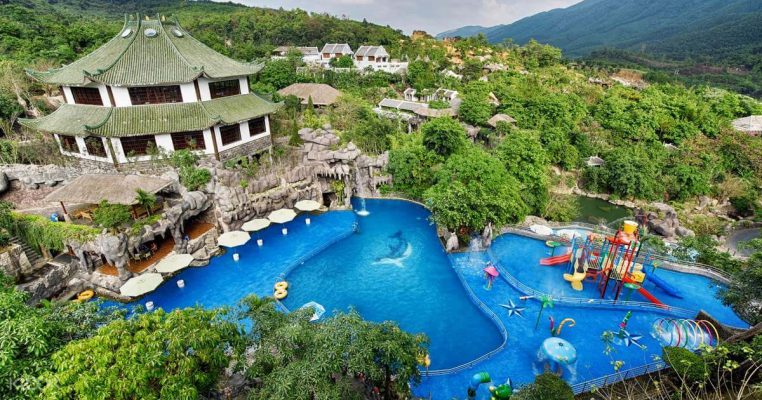
About 15km from the city center, Suoi Luong is a very beautiful and pristine stream covered by forest. This is an ideal ecotourism site located on the tourist route between Thua Thien Hue province and Da Nang city. This is also an ideal space for camping, playing folk games, and hiking. In addition, there are also small motels along the stream, hill villas, bars, and cafes.
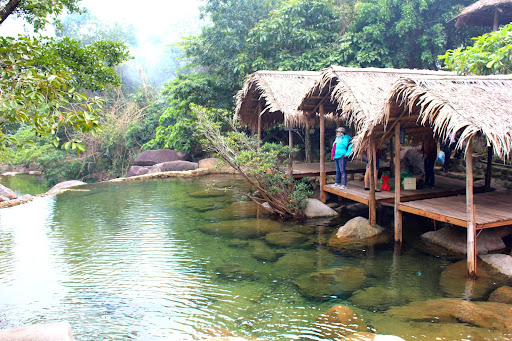
Suoi Hoa is located next to provincial road 604 from Da Nang to Ho Chi Minh road, 30 km from the center of Da Nang city to the West. It has a cool climate, with many white waterfalls all year round besides diverse and rich vegetation.
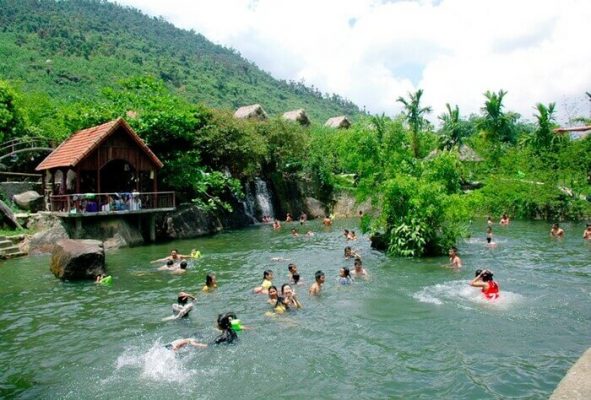
Phuoc Nhon Hot Mineral Water area is located in Phuoc Nhon village, Hoa Khuong commune, Hoa Vang district, 25km from the center of Da Nang city. The average temperature of the hot mineral zone here is about 45ºC, very suitable for relaxing soaking activities, massage, or physiotherapy.
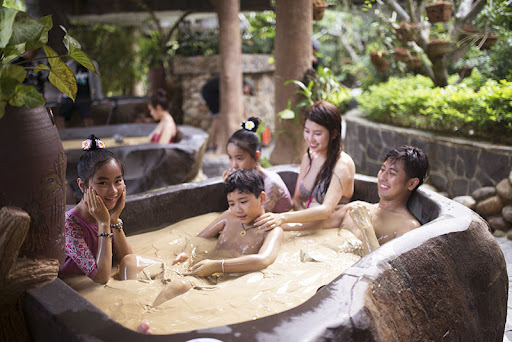
This ecological area has a wild, poetic but amazing beauty created by a natural complex in harmony with many beautiful and poetic waterfalls such as Trinh Nu Waterfall, Thuy Tien Waterfall, Bach Lan Waterfall. In addition, visitors can join adventure climbing tours, explore the primeval forest or conquer the altitude at Dam Doi.
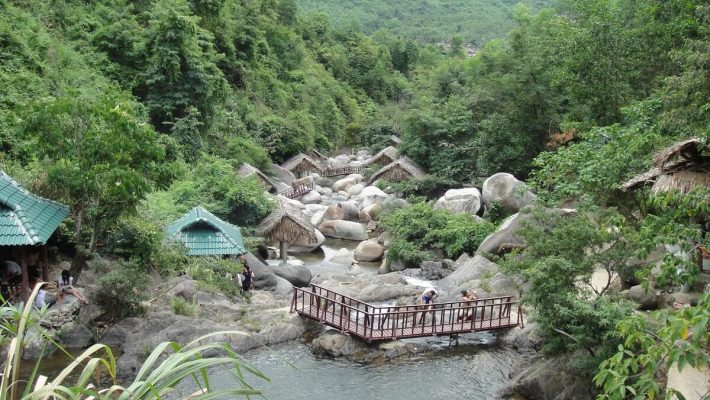
Toom Sara traditional village nestled among the mountains and forests of Hoa Phu commune, Hoa Vang district promises to be a new destination for people and tourists. Toom Sara is the name of the ancient land of the Co Tu ethnic group in Hoa Phu. In Mandarin, “Toom” means spring, and “Sara” is the name of a flower. This place is facilitated by the People’s Committee of Hoa Phu commune and individuals dedicated to the culture of Co-Tu. Toom Sara has been restored by local Co Tu artists to follow the model of a traditional Co Tu village, with a Ghoul house and many Moong houses surrounding it.
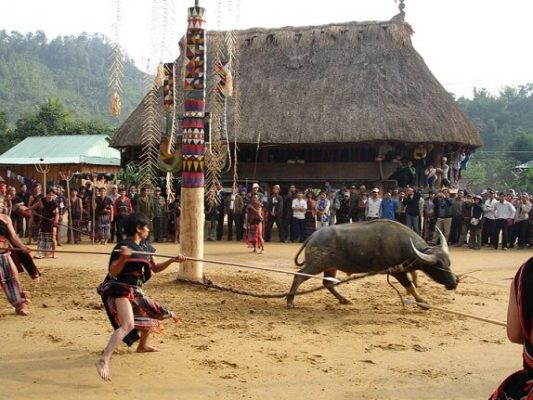
Tuy Loan Rice Paper Craft Village, Hoa Phong commune, Hoa Vang District is famous for making rice paper and Quang noodles. According to the village elders, the rice paper made by the people is so appreciated that it is always an indispensable dish on the ancestral altar on the occasion of the death anniversary. Traditionally, the people of Tuy Loan village put rice paper offerings to commemorate and respect a traditional profession of the village.
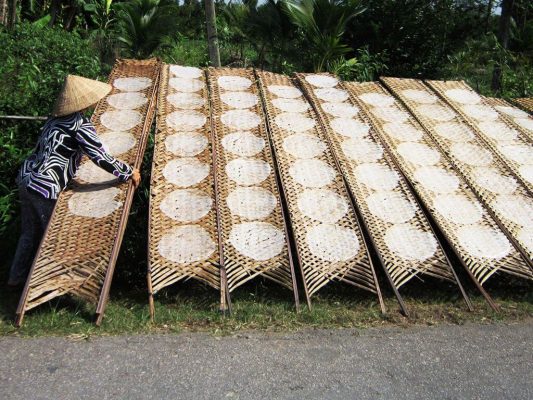
According to many documents, the Cam Ne maturing profession originated from Hoang Hoa, Thanh Hoa, was passed to the South around the 15th century, when King Le Thanh Tong overcame Chiem Thanh, merged into Do Ban in Quang Nam and Da Nang. Through many ups and downs of history and fierce competition, the Cam Ne projection profession is almost eroded, only one person is still working.
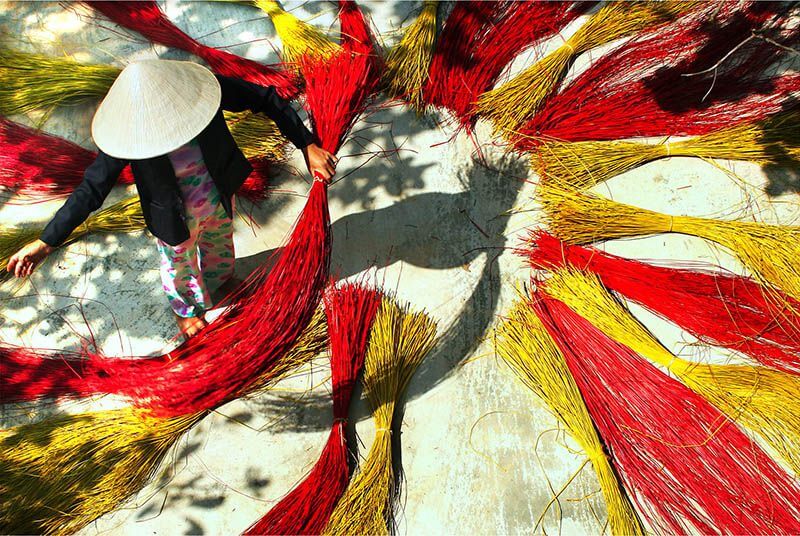
Nam O fish-sauce village was formed in the early 20th century. Nam O is a small fishing village located at the mouth of Cu De River, at the foot of Hai Van pass, now belongs to Hoa Hiep ward, Lien Chieu district.
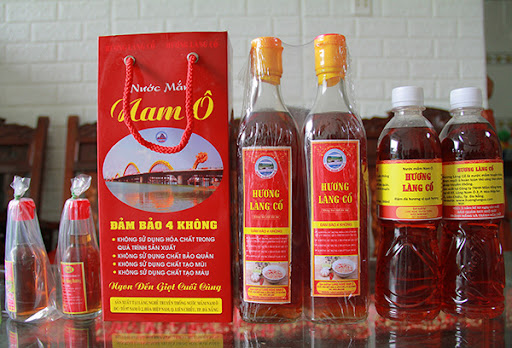
Non-Nuoc stone village located at the foot of Ngu Hanh Son Mountain is a famous traditional craft village of Da Nang city with fine art stone products. Over time, many traditional craft villages have gradually faded, but Non-Nuoc stone-art village still maintains a strong vitality with time and constantly develops.
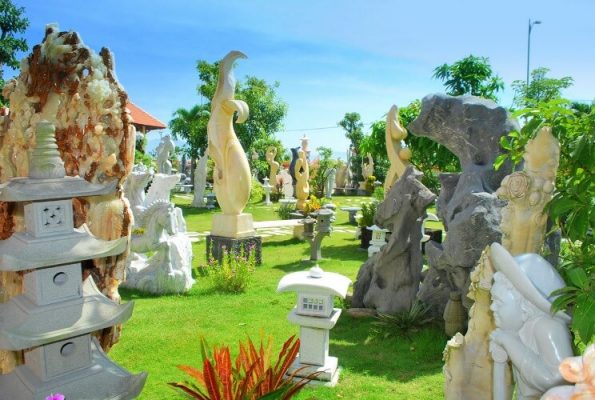
Helio Night Market is known as the culinary paradise at night in Da Nang with hundreds of delicious dishes of all types from snacks, full food, seafood buffet, baked goods, beer, milk tea, lemon tea, ice cream,… you can search for anything you want to eat here. In addition to a diverse food court, the Helio night market also attracts a crowded shopping district, easy-to-buy items, cute accessories, giving you a lot of choices according to your preferences.
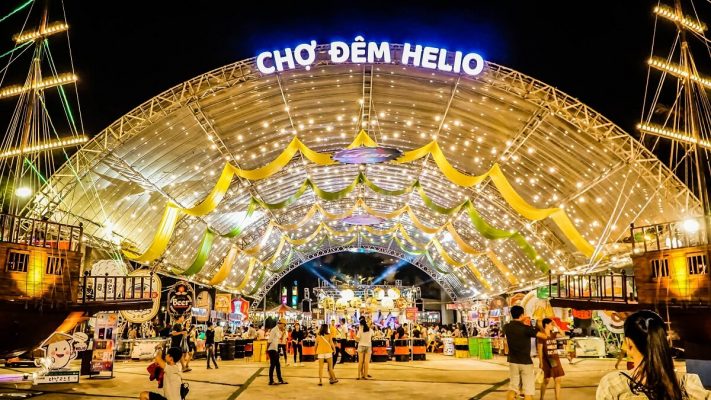
Son Tra Night Market is located on Ly Nam De Street intersecting Mai Hac De, An Hai Tay Ward, Son Tra, Da Nang, located on a convenient road, very close to Dragon Bridge, Love Bridge The strength here is the souvenirs, you can easily find for yourself from specialties to ceramics, lanterns, clothes, hats,… to buy as gifts.
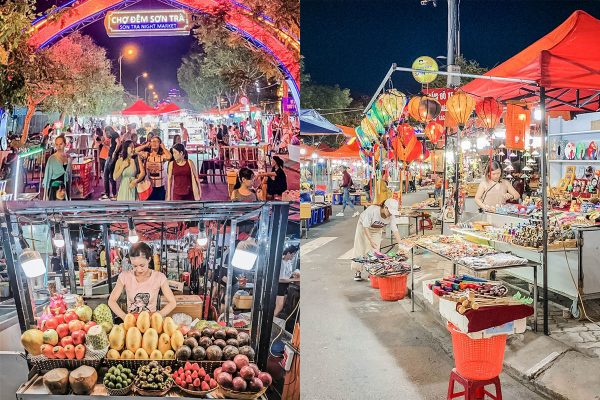
Dubbed the toad market on the shopping street, Le Duan market is a spontaneous, rustic market nestled among luxury fashion shops on Le Duan Street. However, it still attracts a large number of shoppers, especially Da Thanh youth who shop at night.
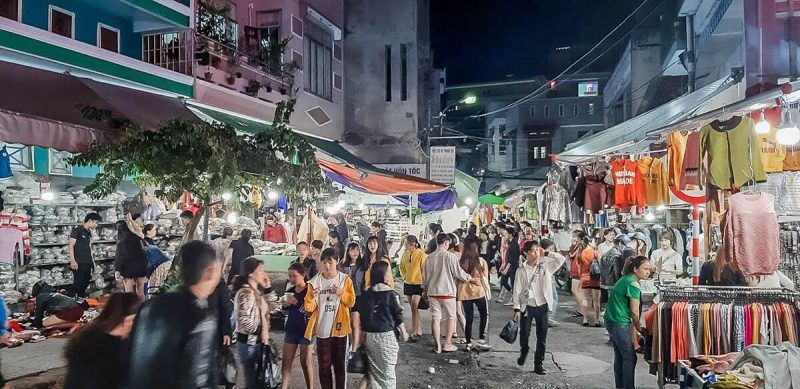
After hours of visiting the scenery and swimming in Da Nang, the rich dishes of the people here will help you fully satisfied with your travel. If you are wondering what to eat in Da Nang, let us take a look at interesting dishes that you should not miss when you arrive in Danang.
Da Nang is famous for many attractive tourist destinations, in addition, rich and fresh seafood dishes are also extremely attractive “plus points”. You can go along Hoang Sa Street to choose a popular pub to eat seafood, seafood prices here are always cheaper than in restaurants in the city center but still very fresh.
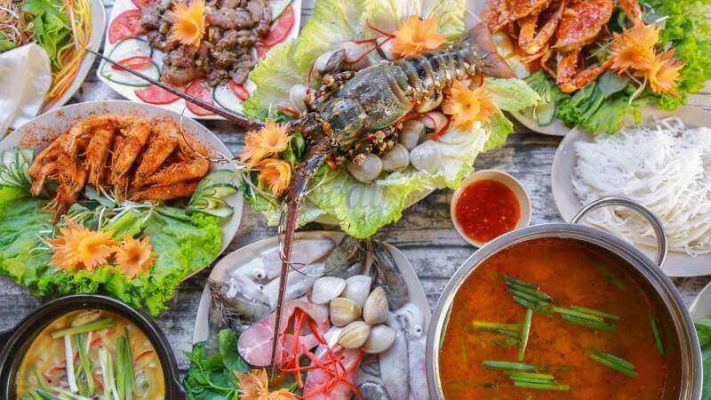
This is delicious, cheap, and very typical seafood in Da Nang. Chíp chíp are often steamed or boiled in the same manner as a clam. Enjoy the hot chips, dotted with salt, pepper, lemon, and chili, you will feel the rich sweetness and deliciousness of this dish. Chip chips are sold at any restaurant or seaside pub.
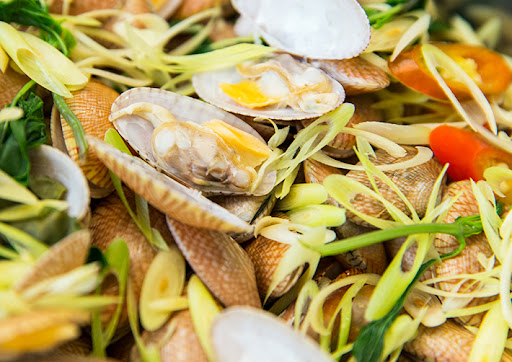
If you are a seafood fanatic, you will surely never forget the strong aroma scent of sea crabs and tamarind sauce that rises in a windy afternoon. Slowly feel the taste of the dish by removing each piece of sweet hunted crab meat in the sweet and sour tamarind sauce tip of your tongue.
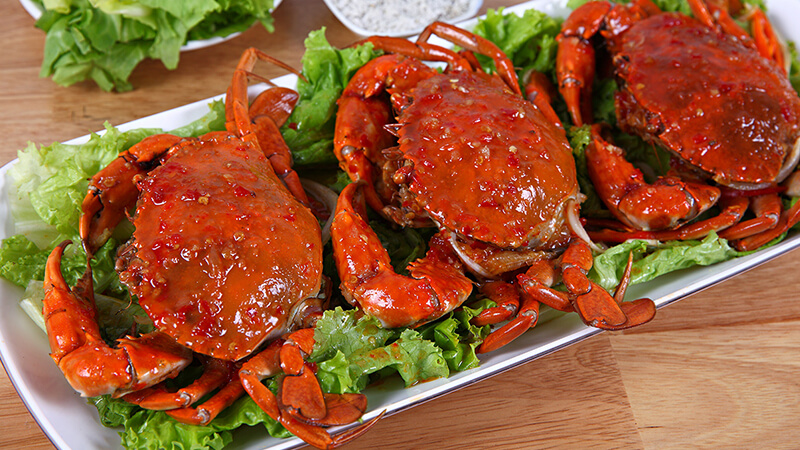
All kinds of scallops or scallops are sweet, soft, and fragrant, baked-on embers with medium to fragrant onions and peanuts, which will make you unforgettable.
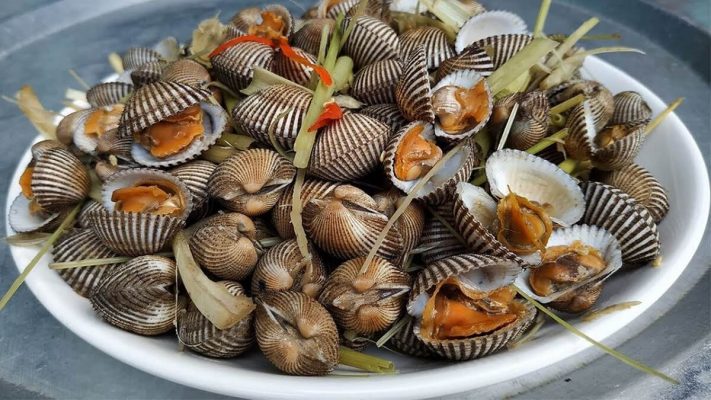
Snails, after being soaked with rice water to dissolve the soil, will be cut the ass and then stir-fried with chili, coconut milk, and ginger lemongrass so that the spices are absorbed evenly into each animal. Snail is usually served with green papaya and rice paper. Just thinking about the crispness of the cake with snails, fragrant snail juice with enough sweet and spicy taste is enough to “catch” those who have enjoyed this rustic gift of Da Nang.
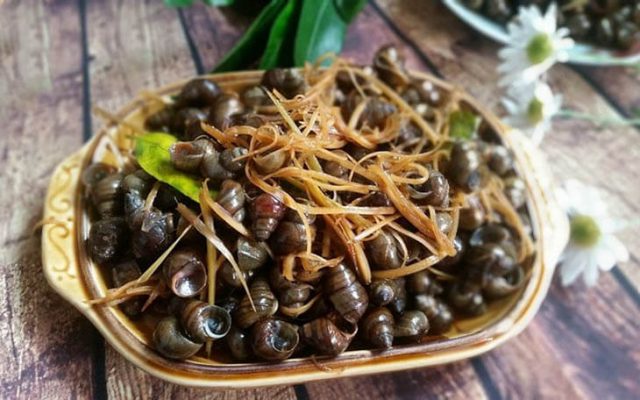
This is a familiar type of seafood commonly found in many seas, including Da Nang. Shrimp are thoroughly marinated with individual ingredients according to the recipe of each shop, then all skewered and grilled over embers.

Fresh and delicious octopus is marinated with spices and then grilled on a charcoal stove. Chewy octopus meat, when grilled, add a layer of spicy sauce above. Served with mango and herb dipped in a cup of spicy fish sauce flavored with chili.
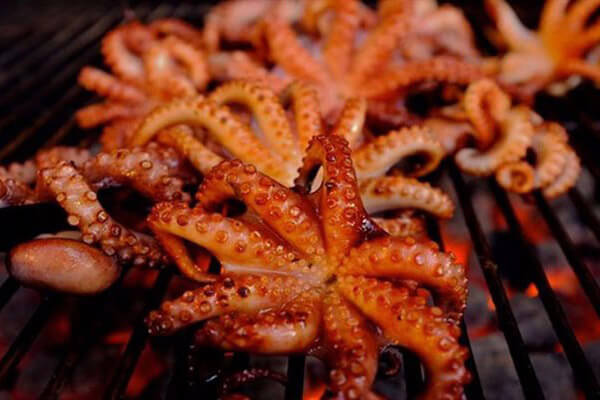
Bánh Xèo is a type of cake with flour outside, inside with shrimp, meat, bean sprouts, fried in yellow, molded into a circle, or folded into a semicircle. Depending on the locality, the cake is enjoyed with its own characteristics. The vegetables served with pancakes are very diverse including lettuce, broccoli, fish lettuce, perilla, basil, cinnamon leaves, and young cold rice leaves. The most sophisticated is in the central regions of Vietnam, in addition to raw vegetables, there are also acrid figs and star fruit.
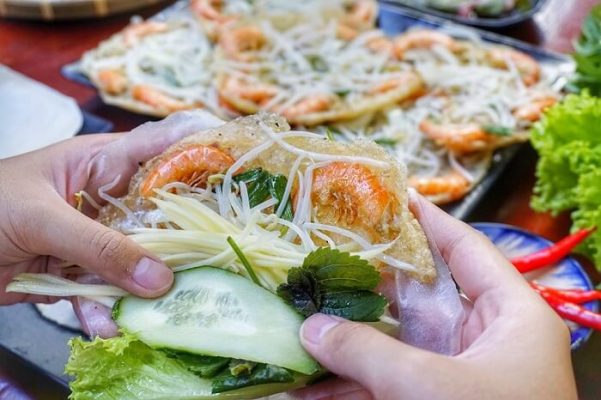
Like Banh Nam, Banh Beo is made from rice flour, then coated in small cups and steamed. When placed on a tray for customers to use, they are sprinkled on top of the crushed shrimp meat and stir-fried with onion and garlic, there is no shortage of crispy fat tart. The white color of the cake looks pure and the bright pink color of the shrimp pistils gives customers a sense of eye-catching and deliciousness. The Banh Beo served with the sauce is a delicious fish sauce with chili and garlic, which is very well mixed so that people can sometimes sip the sauce without fear of salt.
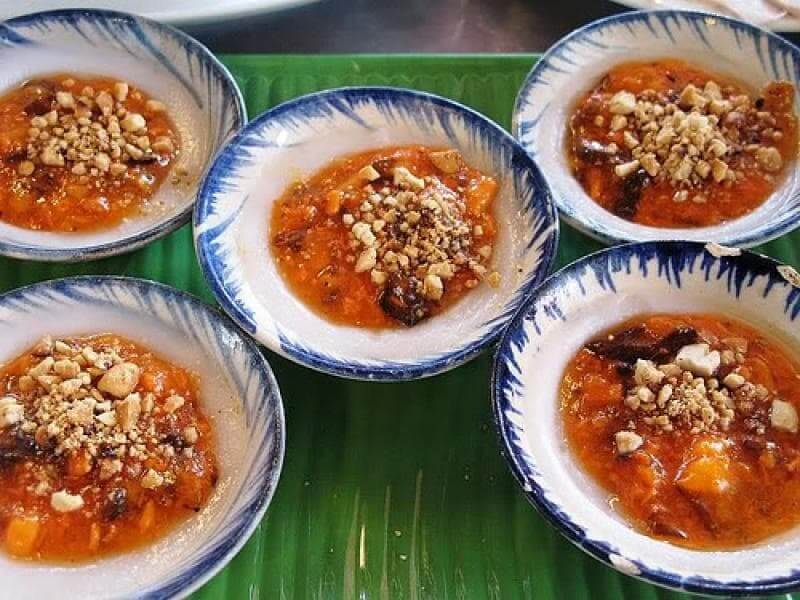
Banh Bot loc with the main ingredient is filter flour, made from tapioca roots, also known as tapioca tubers. Tapioca, after being filtered, boiled apart, taken out to cool, and then kneaded with the raw flour, the cake must be stuffed in your hand, not too dough but not too dry, making sure that when steamed, it is clear and clear. clear shrimp meat wrapped inside. When eating in half, the dough must be soft, but chewy. When wrapping the filter cake, be careful not to let the dough fall out of the leaves, even though the hot cake is cold, it must be peeled off easily. Banh Bot Loc is often used with a very delicious fish sauce.
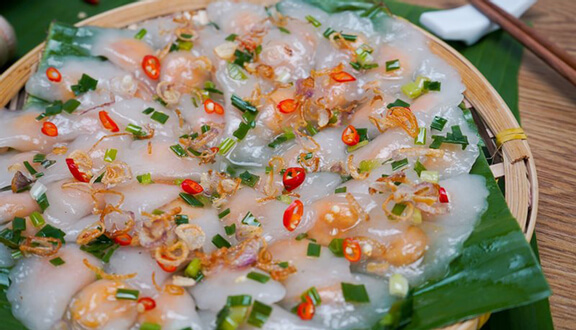
Banh Nam is made from pure white rice flour. The cake is wrapped in a rectangle of green banana leaves, filled with minced shrimp and bacon, lightly sauteed with purple onions, then dough and filled with leaves. Steamed in about 20 minutes for soft cakes. The hot cake when peeled out is the harmony from the aroma of the leaves, the fatty taste of the cake, each piece is soft and melt in the mouth, served with salty or sweet fish sauce.
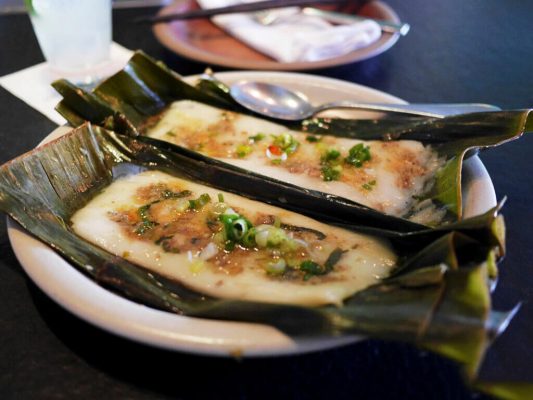
There are also small cakes made from rice flour, round in shape, but compared to the same kind in Nha Trang and Da Lat, Danang cake has a distinct feature from the way it is eaten to the form. If the Banh Can in Nha Trang and Dalat when pouring cake, it almost does not use cooking oil, Da Nang Banh Can be deep-fried. And this is the biggest difference to create its dish in Da Nang. This explains why Danang cake can be crunchy, golden in color, and Banh Can in Nha Trang and Dalat is thicker, soft, not crunchy, and usually the white color of rice flour.
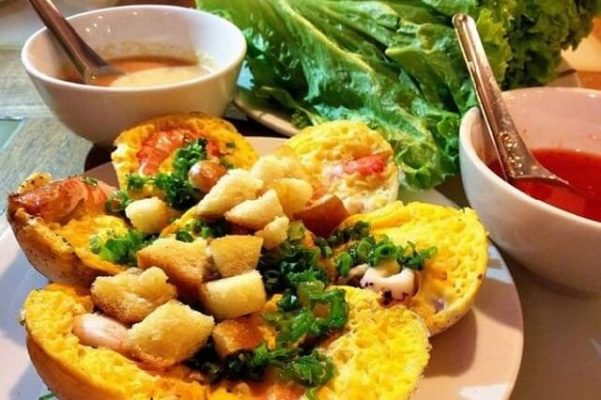
The rice rolls are made from pure rice flour, when finished, they are white with a little mushroom and minced pork shoulder. The cake on the plate will add a little ham, made on top of the onion to increase the flavor. Served with rice rolls including raw vegetables, sweet and sour food, chili garlic fish sauce, and especially grilled skewers.
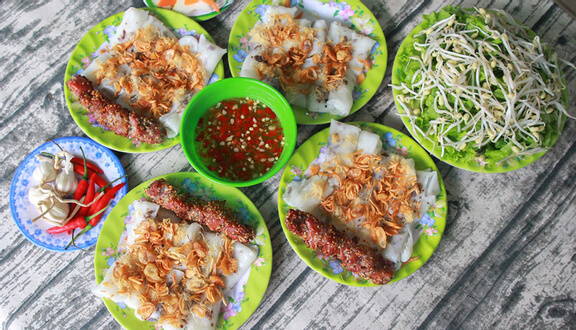
When it comes to Quang noodles, it is not necessary to refer to the specialties of Quang Nam – Da Nang but to a typical dish of the Central people in general. Quang noodles are usually made from noodles with fine ground rice flour and coated into thin layers, then sliced horizontally to have thin noodles about 2mm. Wheat flour is mixed with some additives to achieve crunchy, chewy. Under the noodles are raw vegetables, on top of which are lean pork, shrimp, and chicken with broth stewed from pork bones. People also add dried roasted peanuts and crushed, chopped scallions, herbs, red peppers,… Usually very little broth.
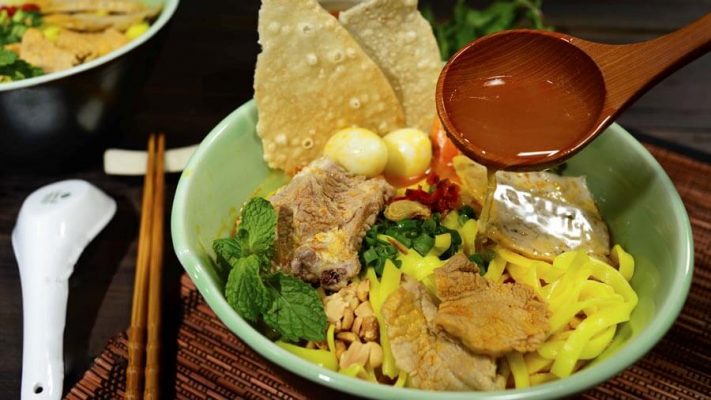
I must admit I do not know how chicken rice in other places is, but chicken rice in Da Nang is delicious. Not too fat, not too brown, sweet enough, fragrant enough to eat with rice that is both chewy and fragrant, the fried chicken flavor and sticky rice are unmatched.
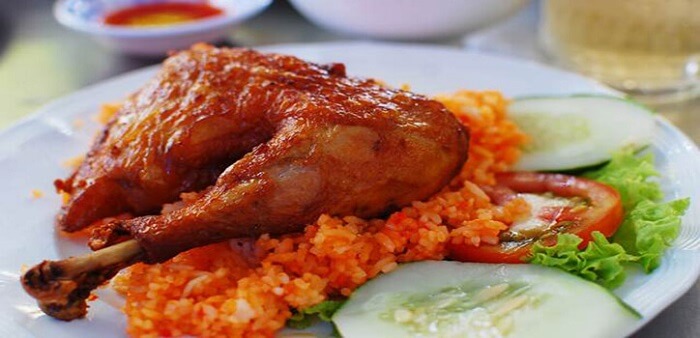
Nem Lui is quite popular in many provinces of Central Central and South Central. From Da Nang back, people often eat spring rolls with crispy rice paper. In each locality, spring rolls have a different taste, depending on taste and processing. Nem Lui is even more delicious thanks to the typical broth dish, like the soup dipping cake. When eating, wrap spring rolls in rice paper with vegetables and then dot in a bowl of broth.
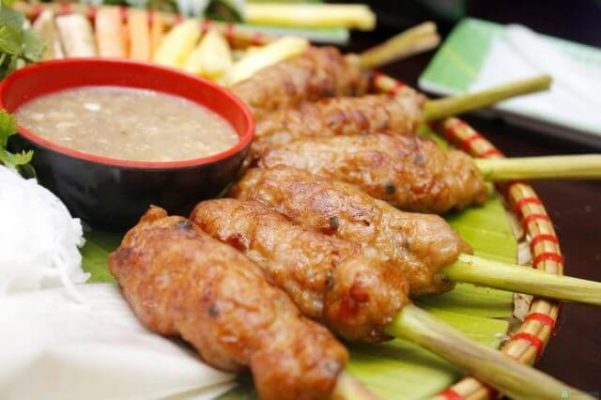
Besides the delicious Quang noodles in this restaurant, the pork roll pastry here is also equally attractive. The simple but special taste of this dish has created so much “nostalgia” for young people who have tasted it when visiting Han River city.
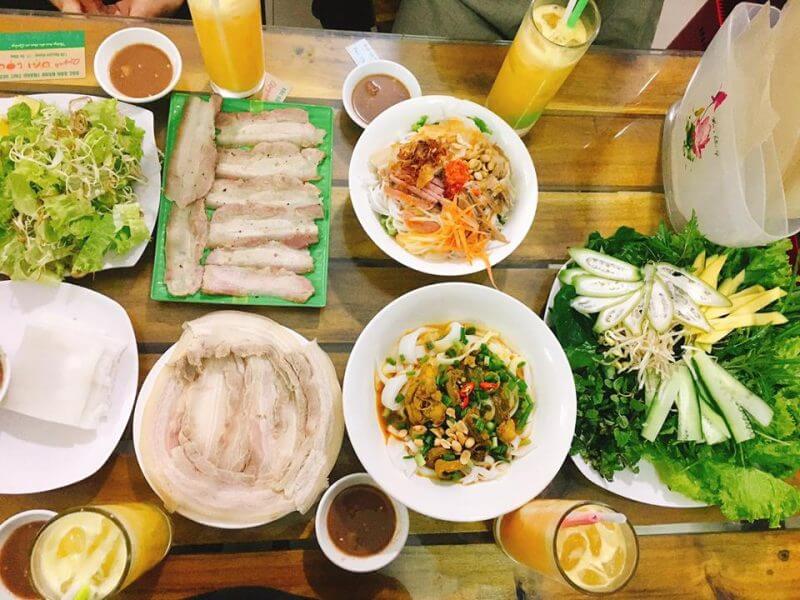
Served with pork roll rice paper is a cup of fish sauce seasoned very richly, fragrant. Besides, eating pork rolls without raw vegetables is considered a very important omission. An eye-catching plate of raw vegetables of all kinds, fresh and young contributes significantly to great taste.
In Da Nang, there are many different types of Banh Canh such as Banh Canh Cá Lóc, Bánh Canh Cua,… The Banh Canh can be cooked from rice flour, but the most popular is filter flour (made from cassava roots). Bánh Canh is usually as big as a chopstick, long and chewy. Eating cake soup must “just eat, blow” because only when starting to eat, the new fiber is put into the pot of boiling water, otherwise the cake will expand and thicken.
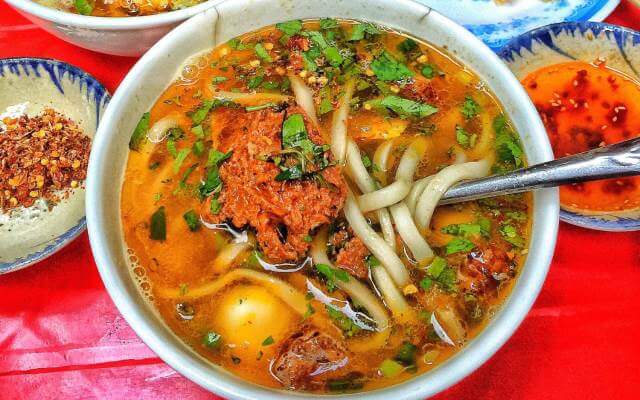
Besides the famous Hue beef noodle soup, the central region also has Quang Nam – Da Nang vermicelli which is also a very special dish. Bun Nam Quang Nam – Da Nang often eats small noodles, with undercooked meat or beef corn. When eating more onions, chili is soaked in to stimulate taste.
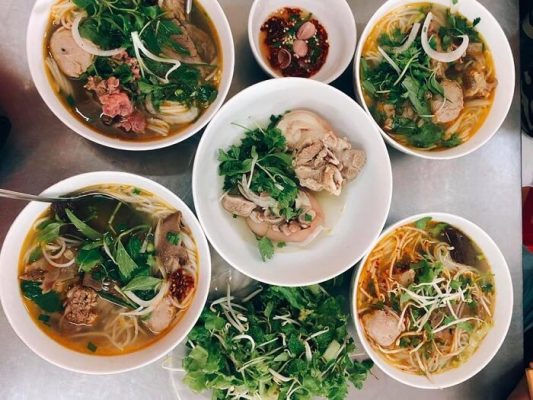
A bowl of vermicelli with fish balls is made according to individual recipes, the broth is made from sea fish and served with garlic chili, pilgrim, and green pepper soaked in sugar vinegar. The sweet and sour taste of the pilgrimage plus the spicy taste of garlic chili will give you an unforgettable and unforgettable experience for Danang fish noodle soup. The dish is used with raw vegetables, although not as picky as raw vegetables Quang noodles, but vegetables also need to be fresh and all kinds of vegetables such as lettuce, basil, and especially with raw bean sprouts.
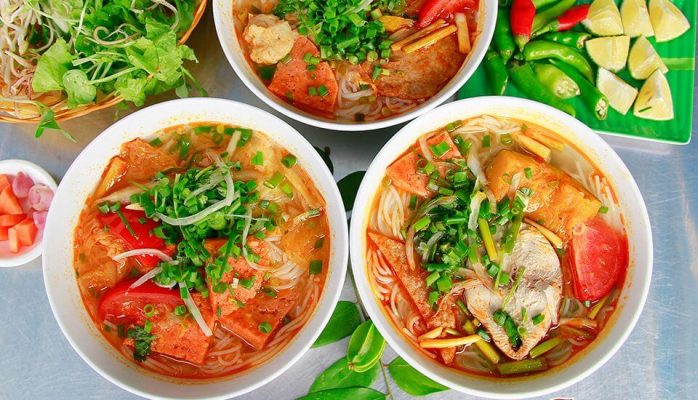
This regional dish is known as bun Mam seasoning, Da Nang noodle soup, or central vermicelli to distinguish it from the specialty vermicelli of the South West. Regardless of how it is changed, the “soul” of this folk dish is still the fish sauce, the delicious fish sauce that determines the quality of the vermicelli bowl. When eating, the seller will spread a layer of raw vegetables at the bottom of the bowl, followed by a layer of vermicelli, meat or spring rolls, side dishes, boiled young jackfruit, crispy yellow onions, roasted peanuts, papaya, and thin fibers. seasoned seasoning sauce has been mixed on top.
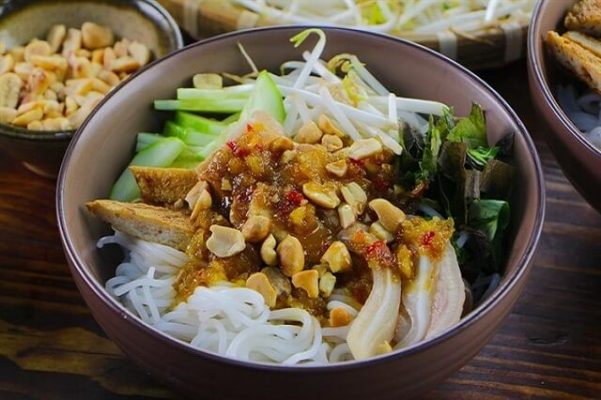
As the famous Da Nang dish for ages, Nam O fish salad is the specialty of this land rich in culinary culture. The fish used to process the salad are sardines, grouper, anchovies … The most delicious and suitable is herring because this fish has sweet and firm meat. The herring living near the shore is caught by fishermen all year round, so it is also an abundant source of raw materials for salad. Herring is larger than fingers, cut head, tail, belly, remove bones, separate the body into two and cut into small pieces and then marinate with ginger, galangal, minced garlic, and “hearing”.
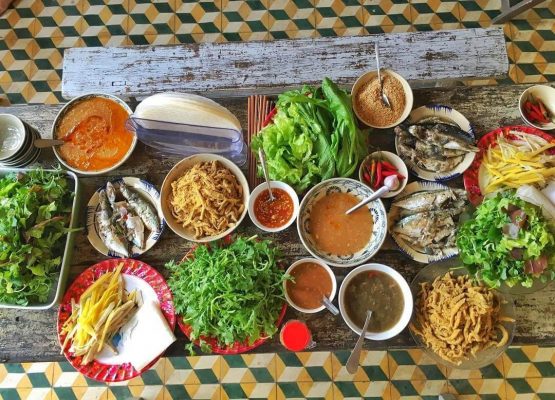
This is a hot dish with bread, 2-3 pieces of beef the size of 3 fingers, a piece of minced beef mixed with spices (small commercial) wrapped in fish fat, an omelet with a whole yolk and above all Scallions with legs, cilantro, and a few slices of chopped onions are cooked in a cast-iron pan that is extremely heat-retarding.
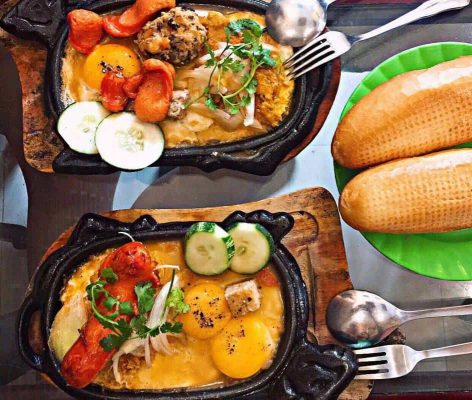
This is a summer beverage loved by the people of Da Nang. In the past, there were not many shops outside selling this tea, so when people wanted to eat them, they had to look to the Con market. By now, similar shops have sprung up quite a lot.
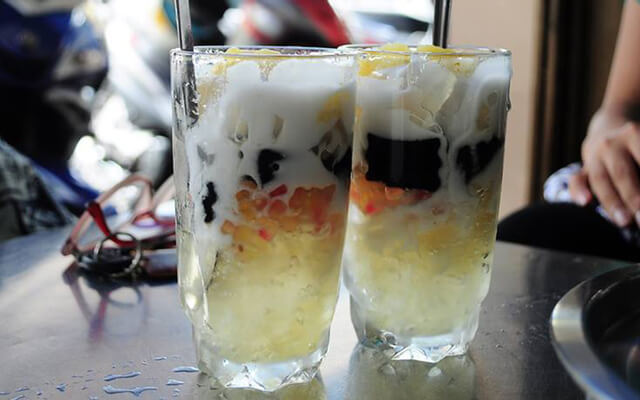
Chè Thai has eye-catching color, cool sweet taste, pleasant aroma with many ingredients such as jackfruit, jelly, durian, longan,… to make the sweet, fatty, durian aroma characteristic of the tea. Lien Tea Shop is famous for this dish.
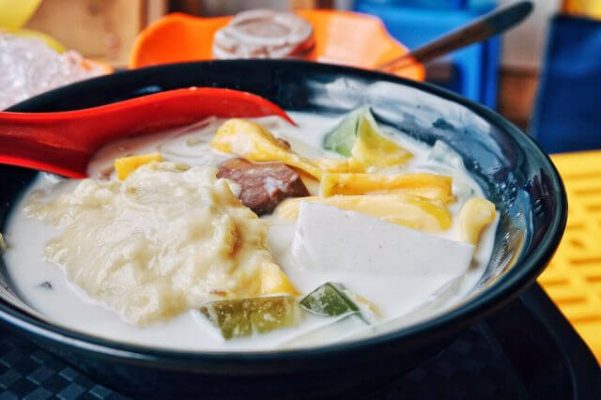
This tea dish is synthesized from many different types of tea, red beans, black beans, coconut water, peanuts, sometimes with shredded coconut, eaten with pulp. You can try this at Xuan Trang Tea.
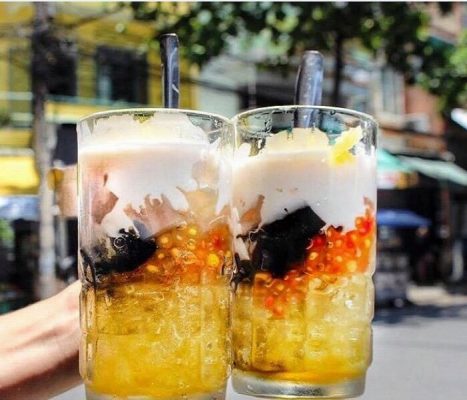
Grilled banana sweep soup is very suitable for cold days, sitting with friends to enjoy a plate of hot, fragrant banana tea mixed with coconut water and peanut pulp makes the tea always loved by customers every time trevaling to Da Nang.
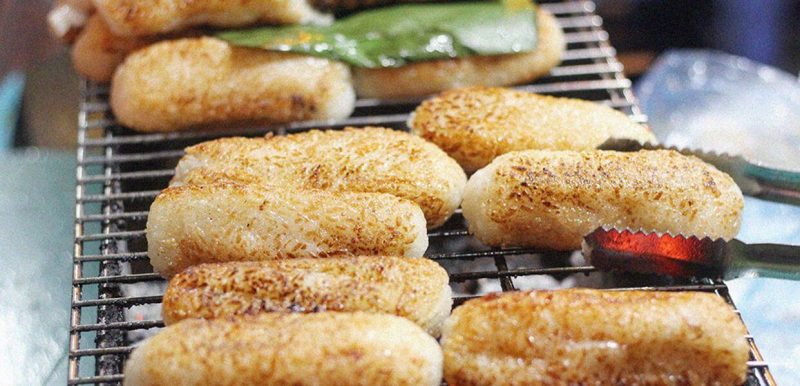
Nam O fish sauce has been well known in the domestic and foreign markets for a long time. The special thing that makes Nam O fish sauce brand name perhaps lies in the recipe. Nam O fish sauce is made from anchovy, caught in the third lunar month (because it has very high protein), choosing a moderate fish, and not washing it with fresh water, will make the fish lose its appetite and it will rot for a long time.
With a plentiful source of fresh seafood, Da Nang is also a paradise for famous dried seafood dishes. Visitors to Da Nang will find all kinds of dried seafood in food markets, specialty supermarkets, and dry seafood areas such as Con market, Han market,…
According to many opinions, Da Nang’s beef rolls are likely to appear from the French period. Because the French have a habit of drinking milk, eating sausages, eating steak … They are forced to find solutions to raise cows to meet their needs and quickly realize that some areas are relatively warm and sunny in the region. Trung raises cows for good quality meat, beef rolls have a plentiful source of raw materials from there.
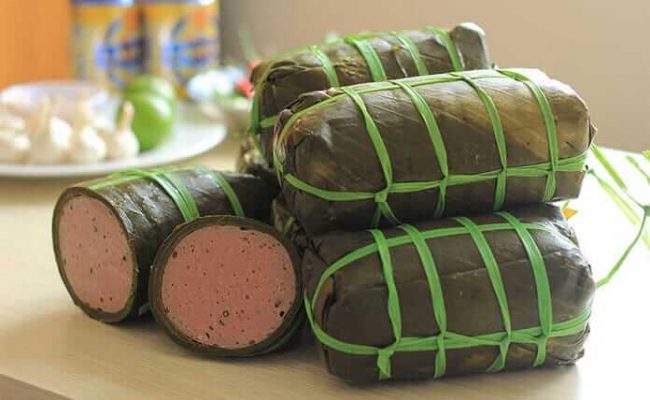
For delicious beef rolls, you must choose beef thigh (type 1), filtered off all tendons, pureed, marinated with onions, garlic, pepper, pure and quality fish sauce, and not mixed with any meat, as well as fillings. another family. Meanwhile, the new beef ball has the characteristic aroma of fresh beef, pepper, onions, garlic, sweet, crunchy, not greasy. “In particular, to have delicious rolls, from meat filtering, meat grinding, mixing spices, and wrapping until finished boiled, it should not exceed 2 hours.
Squid is a special gift that most waters in the country, including Da Nang, have. The squid is washed away to reduce seawater in the squid, then dried in the sun. You must choose a place with lots of sunshine and big sun to make the squid taste better. The important thing here is that the squid is only exposed to one time under the sun.
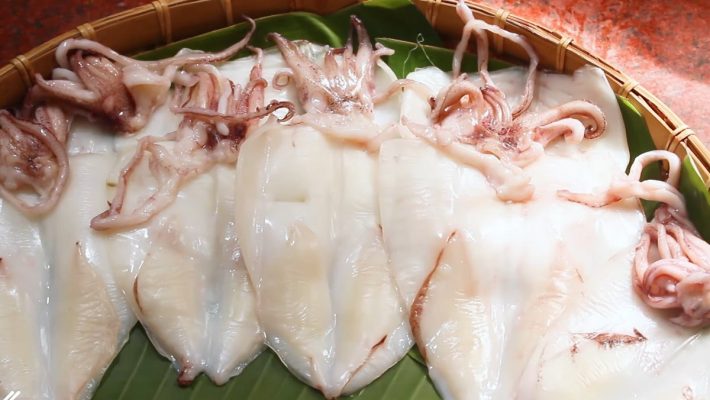
Dried sesame cake locals often call it “dry cake” or “7 fire cake”. The cake has to go through 7 stages of fire to create a finished batch of cake: steam the cake, roast sesame seeds, sweeten it, bake the cake 4 times until it is completely dry. The name of the cake is enough to depict the hard work of the craftsmen here. Each cake is the result of creativity, of labor beauty.
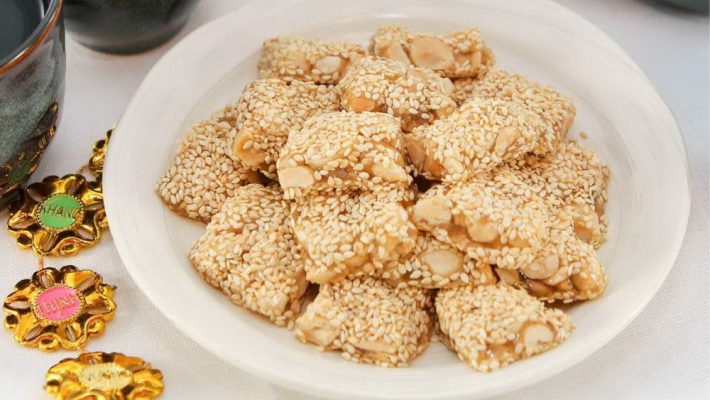
The itinerary is for you who want to combine exploring Da Nang, Hoi An, and then to the Cu Lao Cham MPA.
Day 1: Saigon – Da Nang
In the morning, fly from Saigon to Da Nang, check in to rest, go around to My Khe beach, swim, and play.
In the afternoon, rent a motorbike (or rent a taxi with those who cannot ride a car) to Son Tra Peninsula, go to Linh Ung Pagoda, go to the top of Ban Co to see the panoramic view of Da Nang.
At night, go to some night markets, this place is suitable for young people who like to be active. Families who do not want can move to the sea to play.
Day 2: Discovering Ba Na
Ba Na generally takes about 1 day, you can rent a car by yourself or book available tours for convenience. Cable car tickets on winter occasions should be booked in advance and there is no need to wait in line.
Evening back to eat seafood Da Nang, to the Han River Bridge to sit and watch the bridge turn.
Day 3: Da Nang – Hoi An – Cu Lao Cham
Move Da Nang – Hoi An then continues to Cua Dai port to board the train to Cu Lao Cham. If you do not want to lose money, you can book a tour, usually, the tour to Cu Lao Cham will return to the port at 2 pm.
In the afternoon, you stay to play in the old town of Hoi An, enjoy Hoi An cuisine at night, then take a taxi back to Da Nang.
If you like this day you can also sleep in Hoi An, the next day from Hoi An straight to Da Nang airport, too.
Day 4: Da Nang – Saigon
This day, you will take a leisurely morning walk around, buy some things as gifts and then check out and board the plane back to Hanoi.
This schedule comes in by train and at the time of departure will be by plane, very suitable for those who love traveling by train or families with children who want to let their kids experience.
Day 0: Hanoi – Hue
Departure from Hanoi to Hue by train, depending on your free time, you will arrange to travel accordingly. Usually trains run in the evening, around 19-22h.
Sleep the first night on the train, it can be a bit difficult to sleep but if you go a few families will be quite happy.
Day 1: Discover Hue
Around 10-11 am, you arrive at Hue station, take a taxi to the hotel, check in and start exploring Hue. If you have not had time to eat breakfast, you will hang around looking for a bowl of vermicelli to enjoy.
From the hotel, rent a cyclo pass through Truong Tien bridge to Hue imperial city.
Buy a ticket to explore the inner city, because the area is quite large, it may take a few hours or an entire morning to fully explore the citadel. After finishing, go out to find some famous restaurants to enjoy delicious food in Hue. Near the royal citadel, there is Lac Thien restaurant, which is quite famous for Thuong Tu’s delicious cake.
Early in the afternoon, from the center of Hue city, I rented a motorbike to go to Thien Mu pagoda. The road running along the Perfume River is very cool and beautiful. Spend about 1 hour to visit and take pictures at the pagoda, from here running another ten kilometers, you will reach Huyen Khong Son Thuong, a temple located on the mountain with a very beautiful landscape. From Huyen Khong, Son Thuong comes back to Hue to go through some garden houses, if you are interested, you can visit.
In the evening, go back to the center of Hue city, enjoy the typical cakes of Hue. If you go on weekends, you can walk around the night market, drink beer, and listen to music.
Day 2: Tam Giang Lagoon – Phu Cam Church – Thanh Toan Ngoi Bridge
Get up for breakfast, drink coffee and depart for Tam Giang Lagoon. This place is more than 30km from the center of Hue city, at noon stay to eat at restaurants on the lagoon, rest, and then return to Hue in the afternoon.
In the afternoon, back to the center of Hue City, visit Phu Cam church, and then go to Thanh Toan tile bridge. These are two beautiful places in Hue, not too far away so it is completely possible to go in one afternoon. At night, enjoy your time in Hue City
Day 3: Hue – Da Nang
In the morning, check out the hotel, board the train to depart for Da Nang, and remember to buy tickets online first. The travel time is about 3 hours, and the Hai Van pass is very beautiful.
Around the early afternoon to Da Nang, check-in at the hotel.
Afternoon around renting a car to go to Son Tra peninsula, cool afternoon to My Khe beach bath. Evening wandering to enjoy seafood or some famous dishes of Da Nang.
Evening to drink coffee, late at night can wait for the Han River bridge to spin
Day 4: Discovering Ba Na
Around 7:30 am, you depart from the center of Da Nang, arrive in Ba Na around 8:00 am-8h15, then prepare your belongings, move to Hoi An station for a trip at 8:30.
Up to the first station, down to visit the Golden Bridge, walk along the bridge to take the mountain train to the other side to visit Linh Ung Pagoda, the wine cellar, the flower garden. Around these places must also be around 11:00 am.
Next, go to Debay Station to reach the top of the mountain, enter Fantasy Park for indoor games.
Around 12:30, visit the restaurant areas for lunch and rest.
In the afternoon, 14:00 continue to explore the French village, spiritual tourist sites on the top of the mountain.
15:00 to Toc Tien waterfall station down the foot of the mountain, car back to the city center.
Check out the hotel, then take the car to move to Hoi An. After checking in at the hotel in Hoi An, borrow the hotel’s bicycle to cycle around the old town.
If you want to enjoy some delicious food in Hoi An, you have to go outside, there is not much in the pedestrian street.
Day 5: Hoi An – Cu Lao Cham
You can go to Cua Dai port to buy train/canoe tickets to Cu Lao Cham by yourself. If you just want to quickly explore Cu Lao Cham, buy a neat tour. Around 2:00 pm the tour will take you back to the hotel.
Rent a motorbike, run to the Bay Mau coconut forest late in the afternoon, now go visit the coconut forest to cool, around time only about 1 hour.
Evening back to the old town to rest
Day 6: Hoi An – Hanoi
Get up in the morning to rest, eat, check out the hotel and then go straight from Hoi An to Da Nang airport to Hanoi, end the journey.